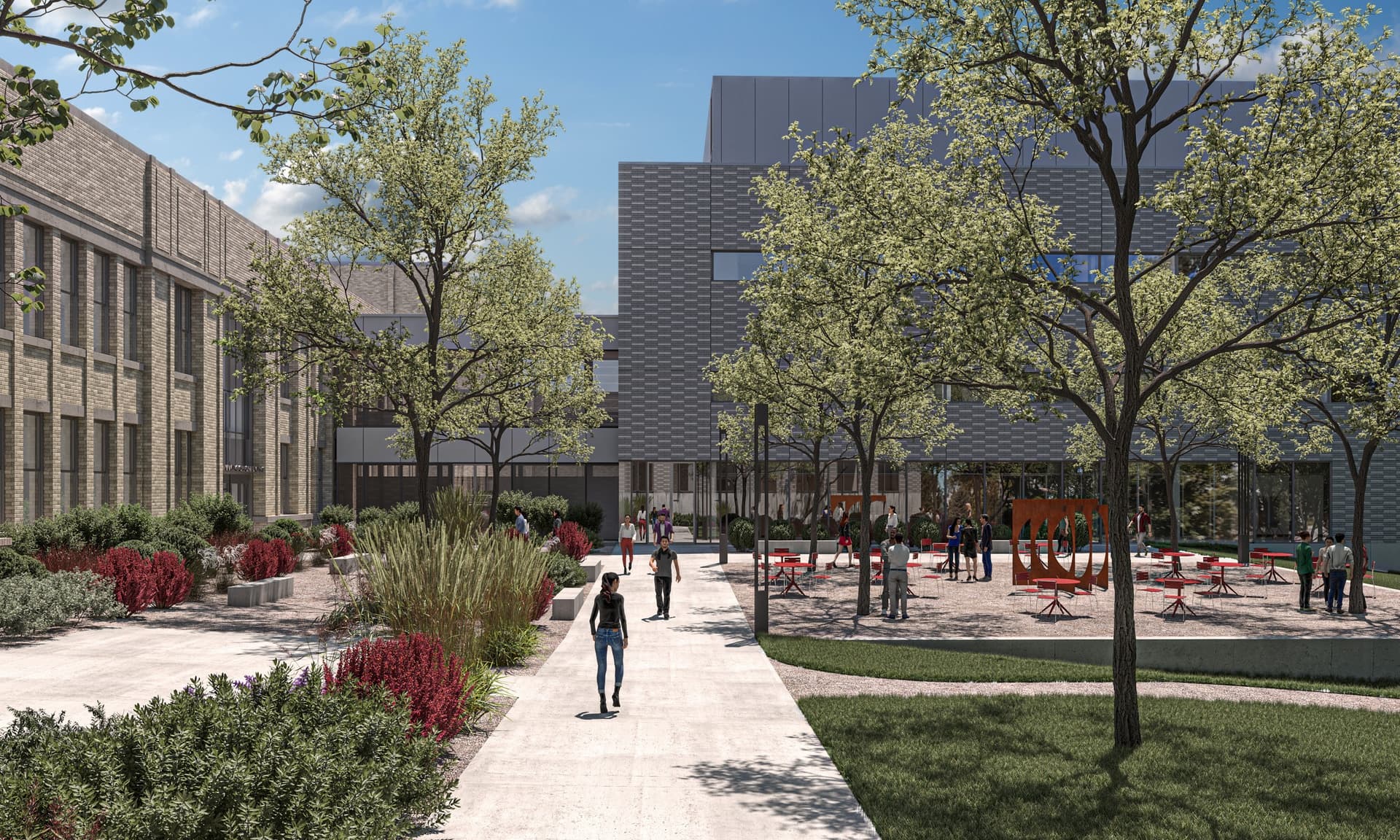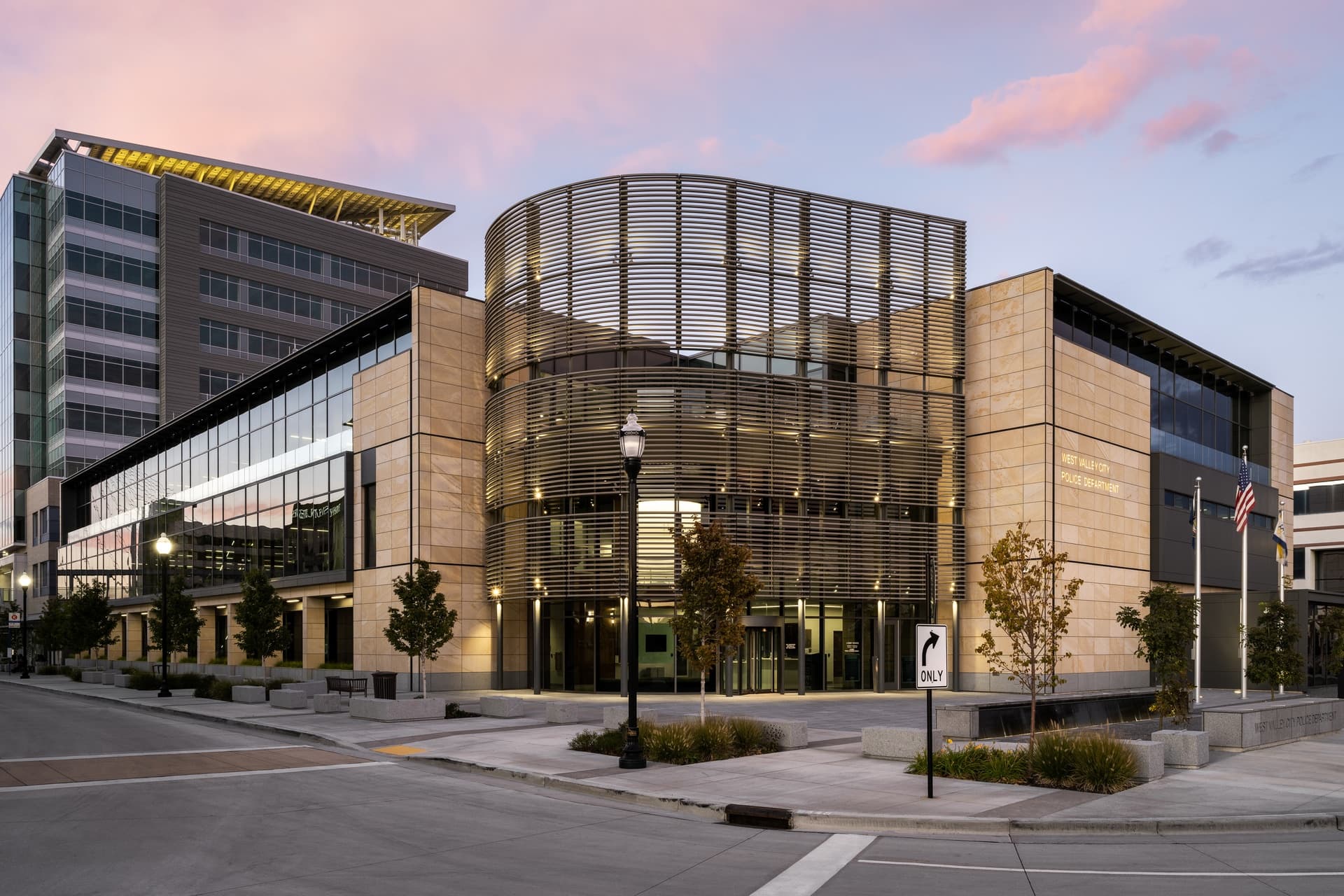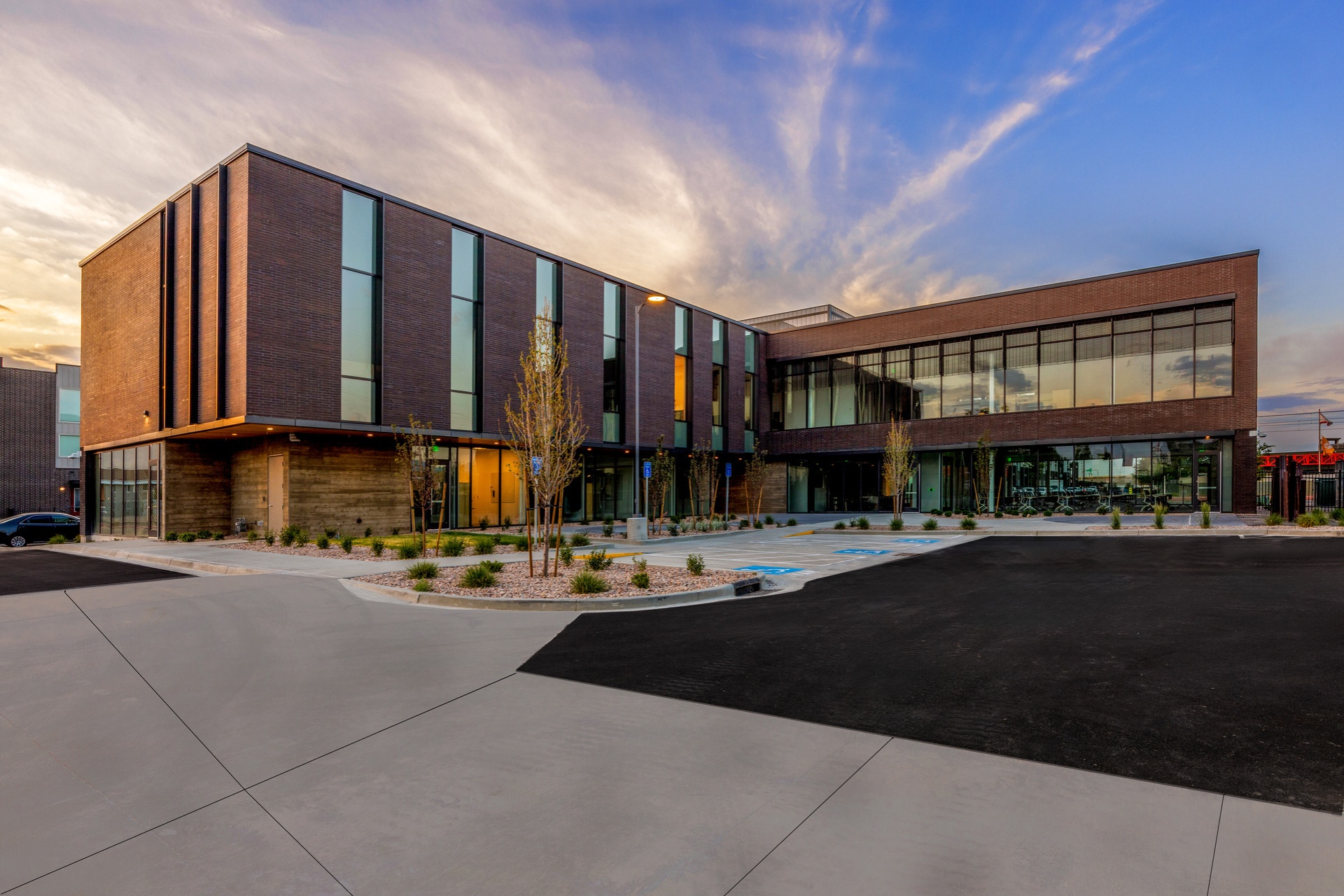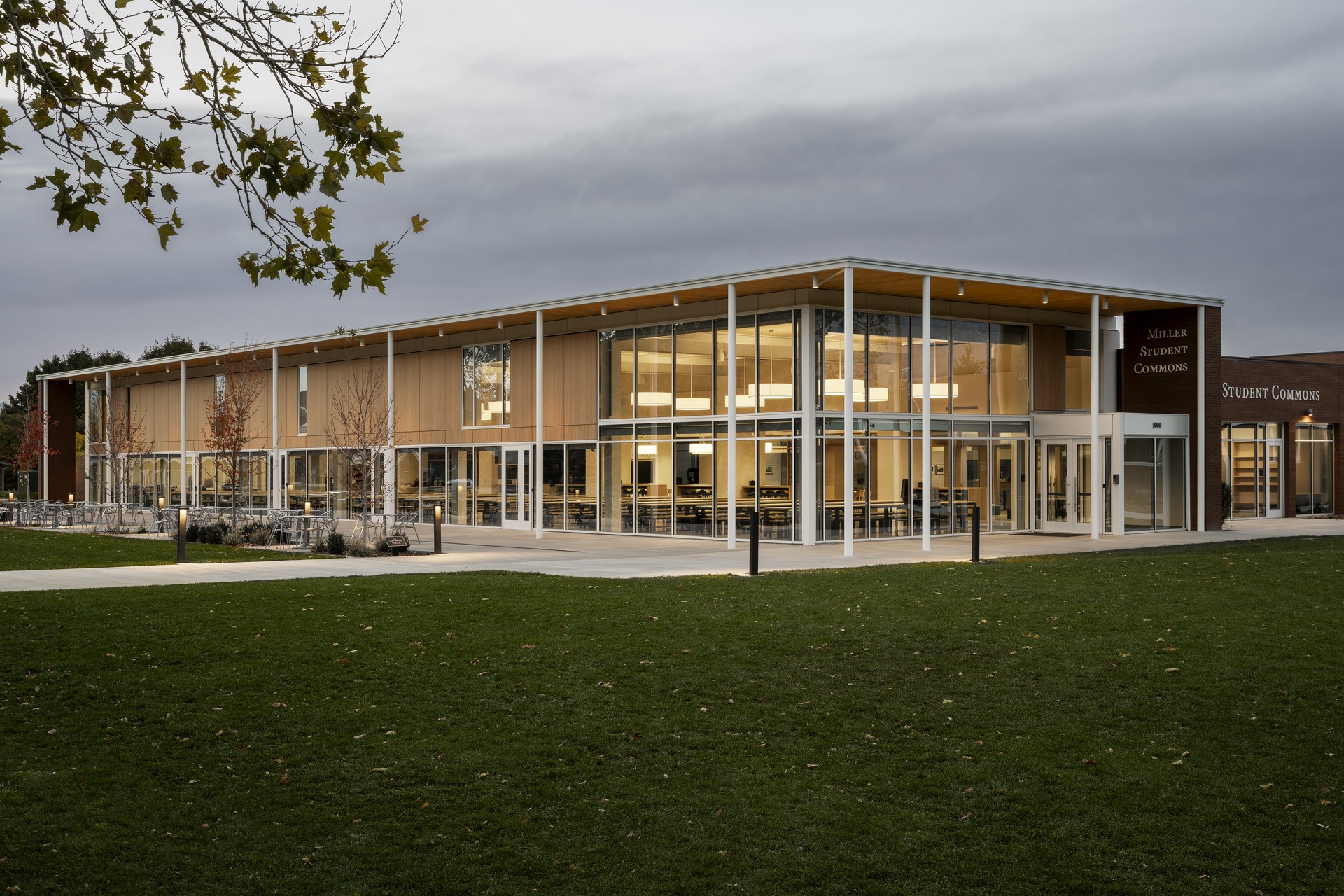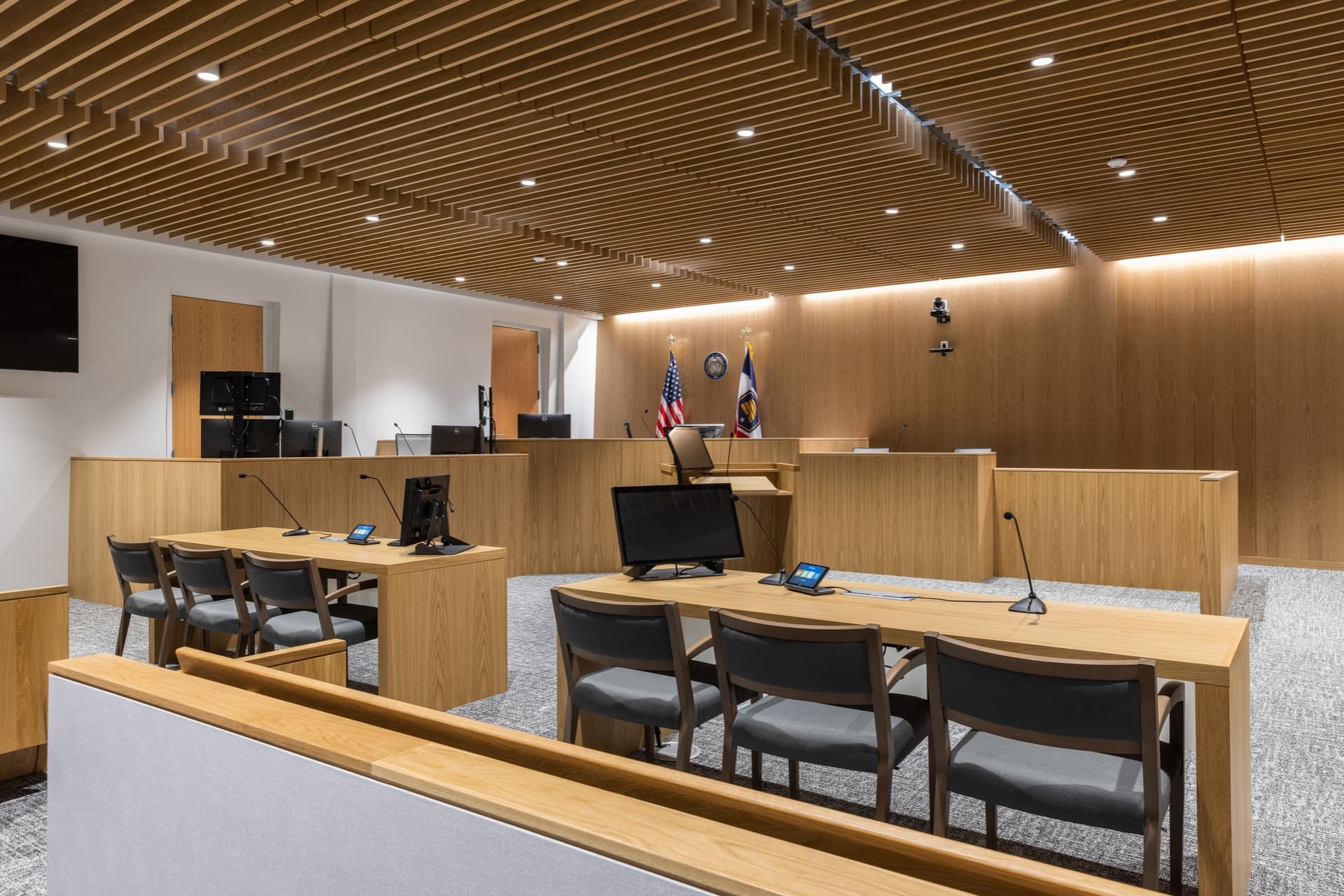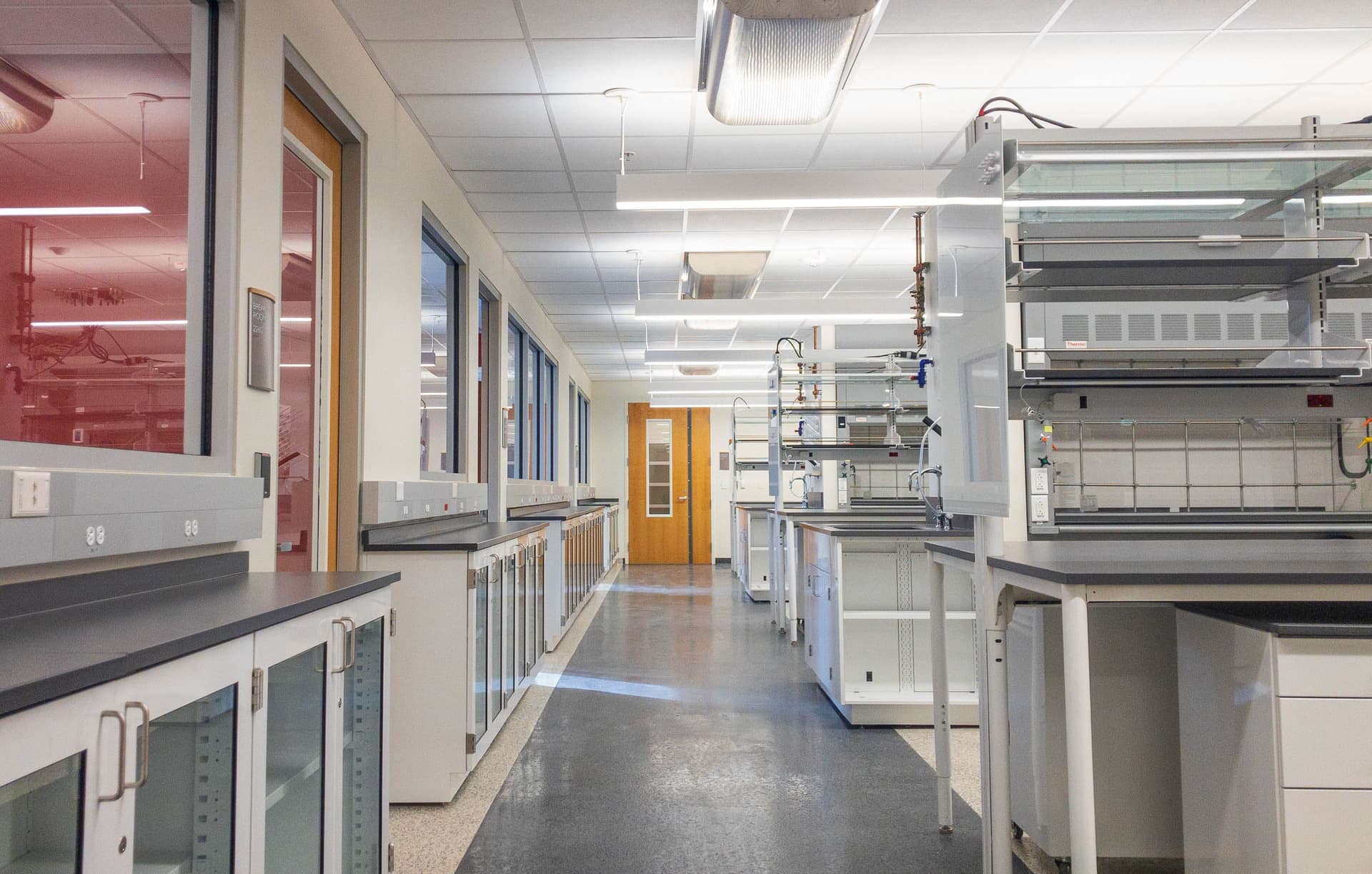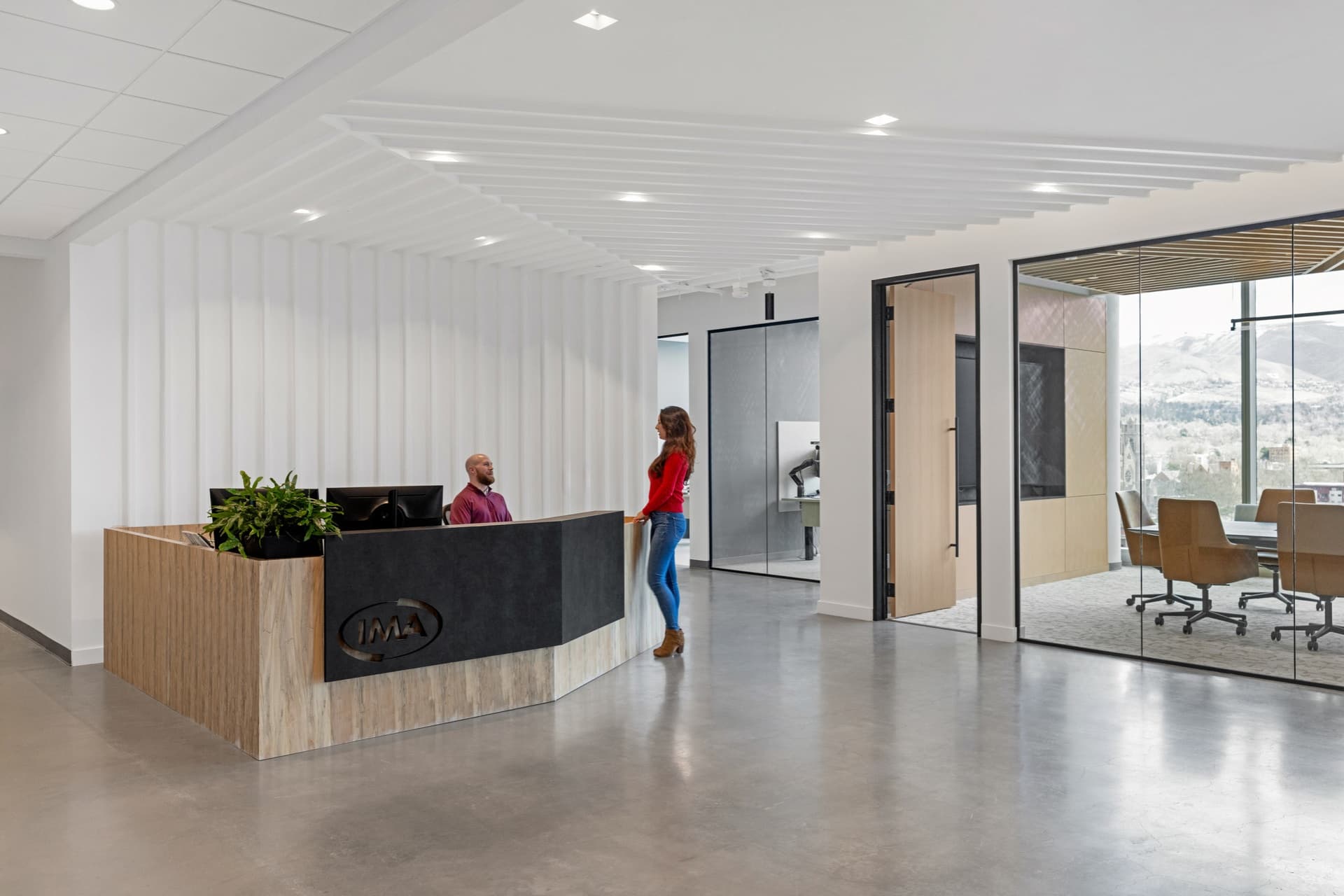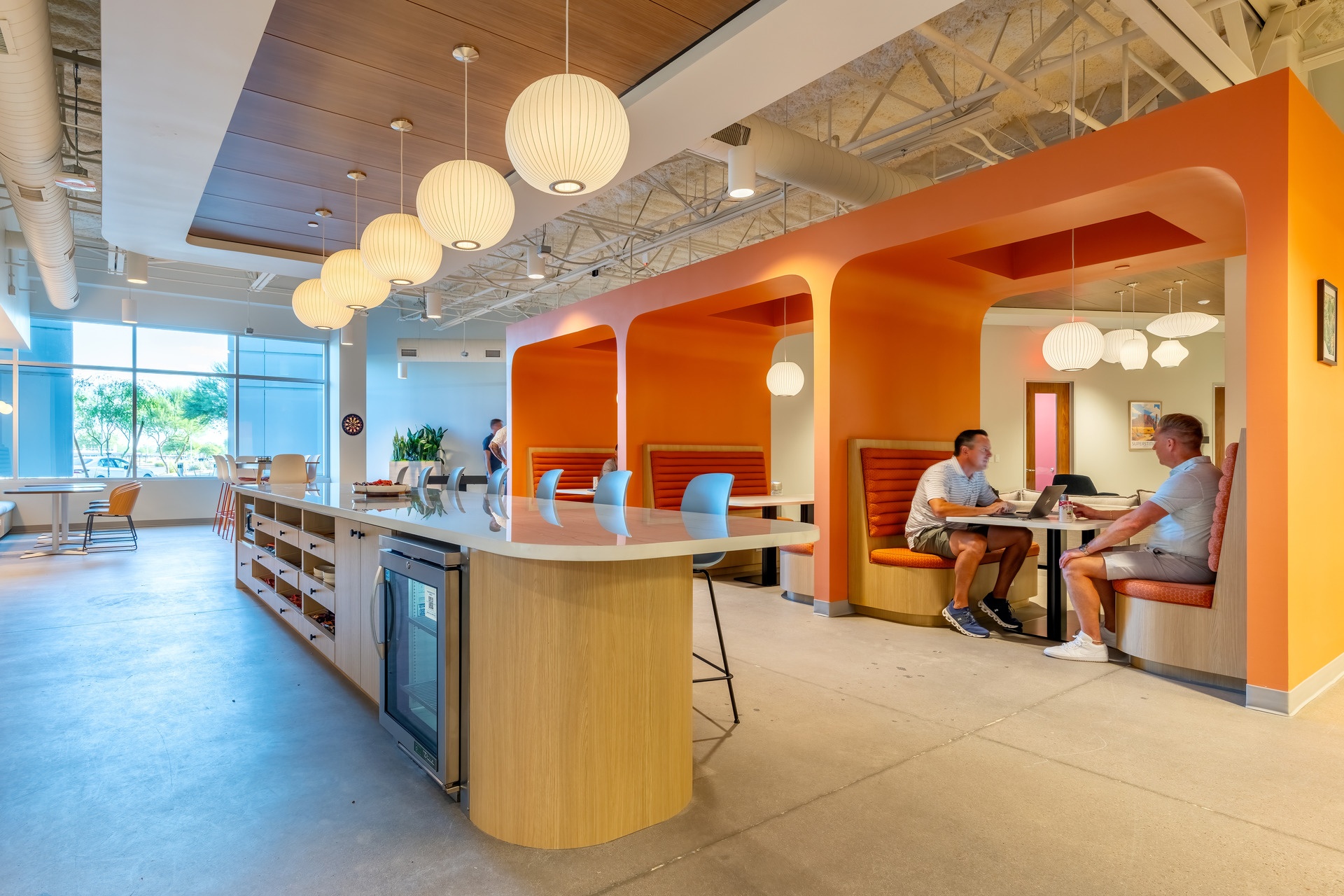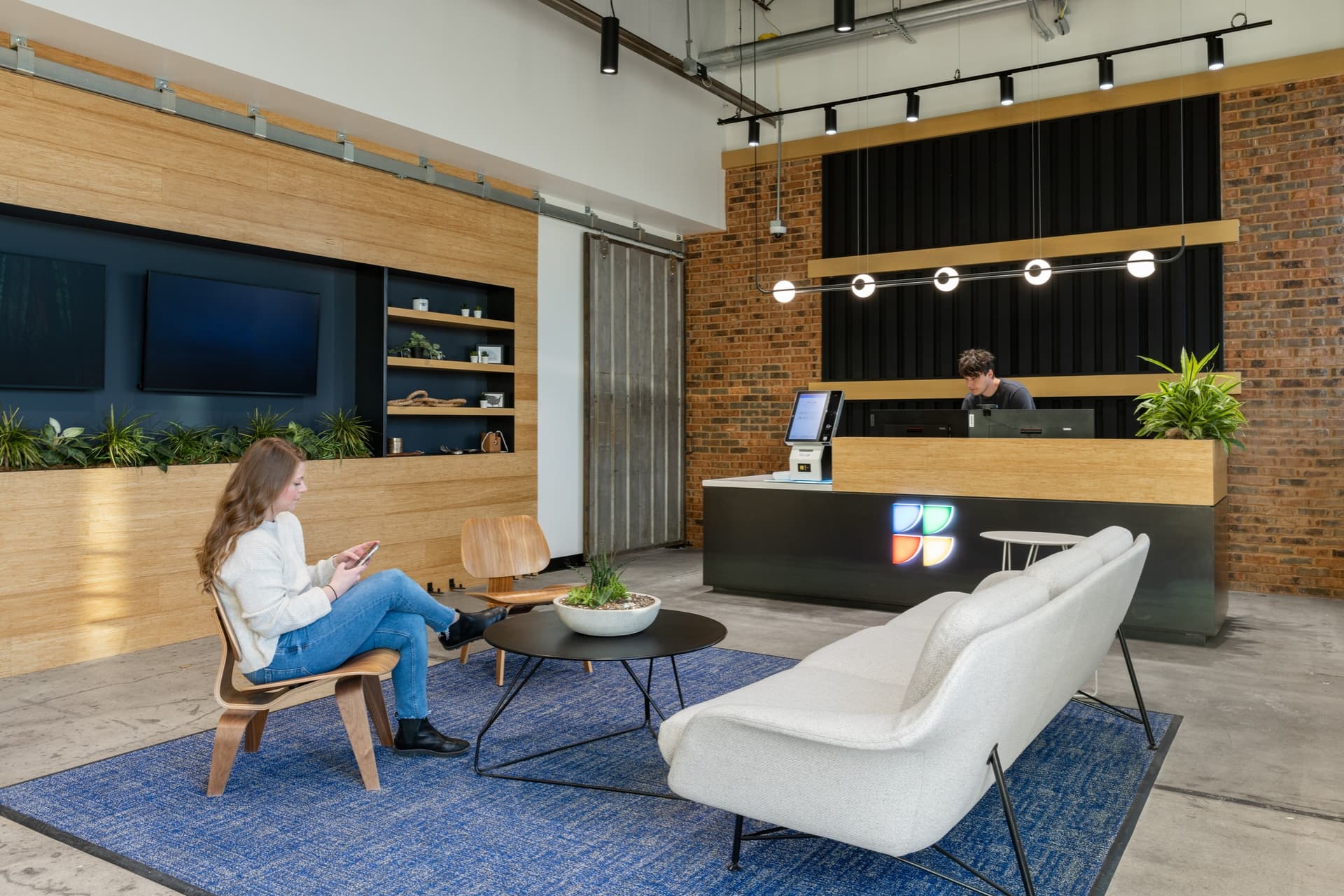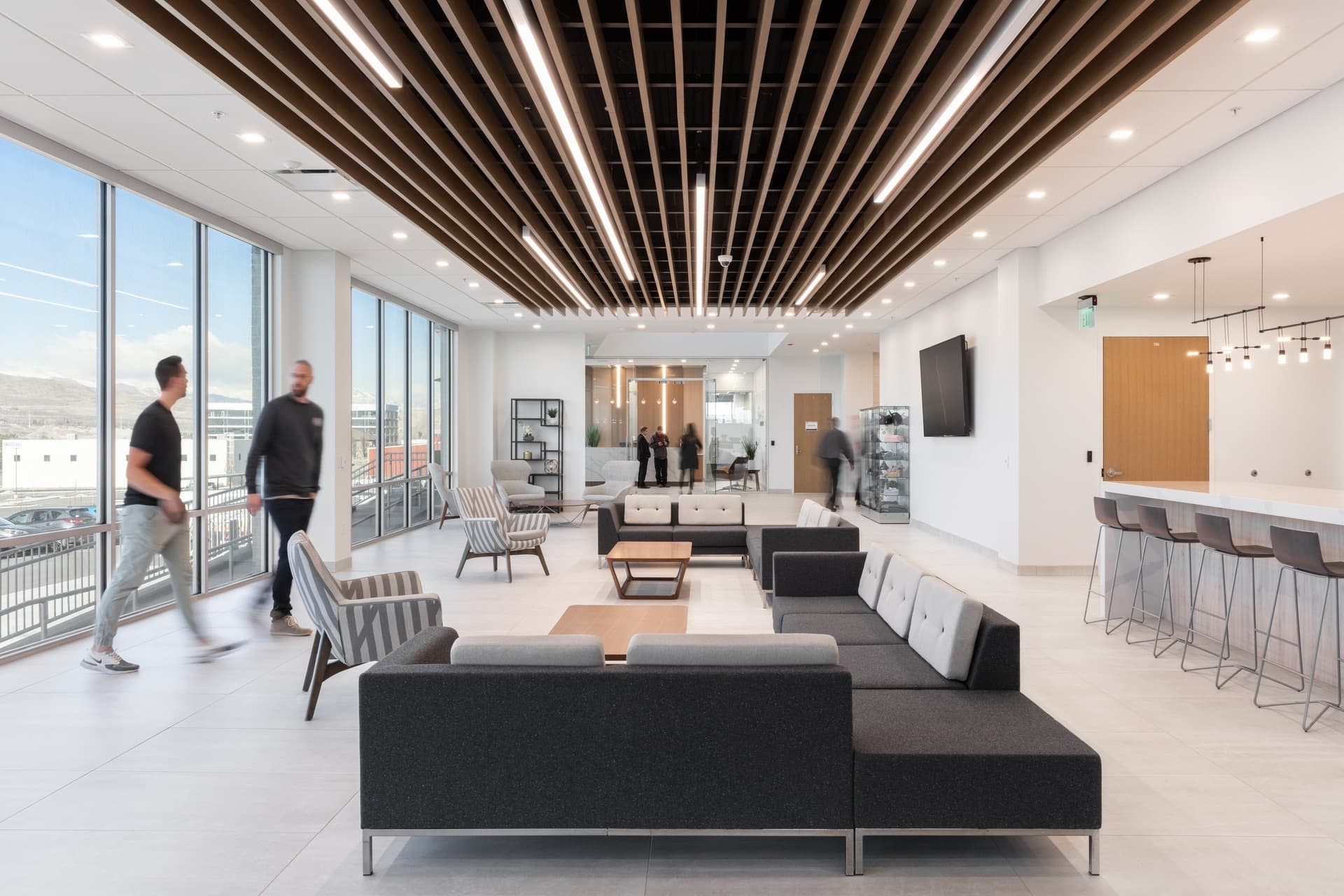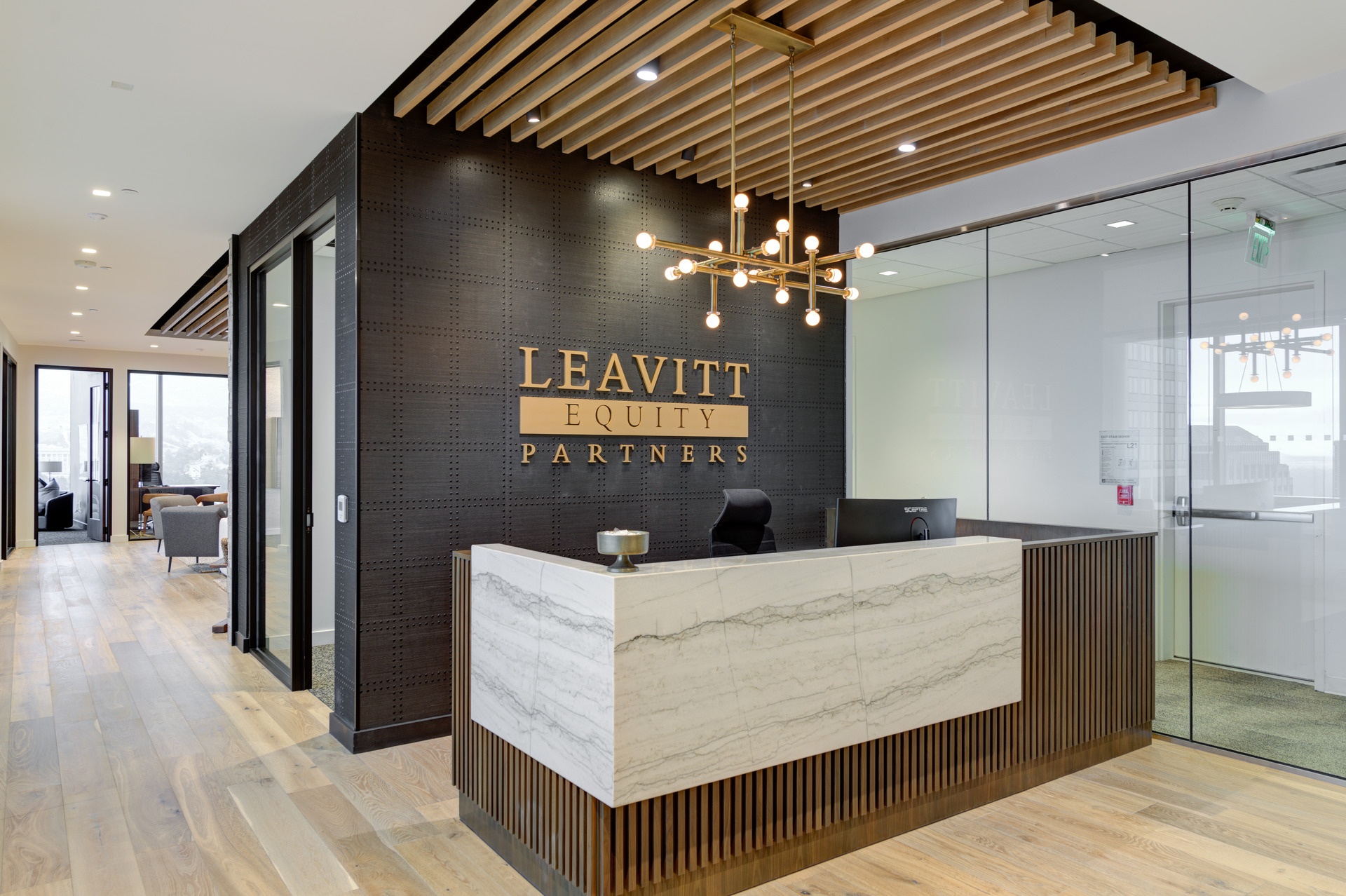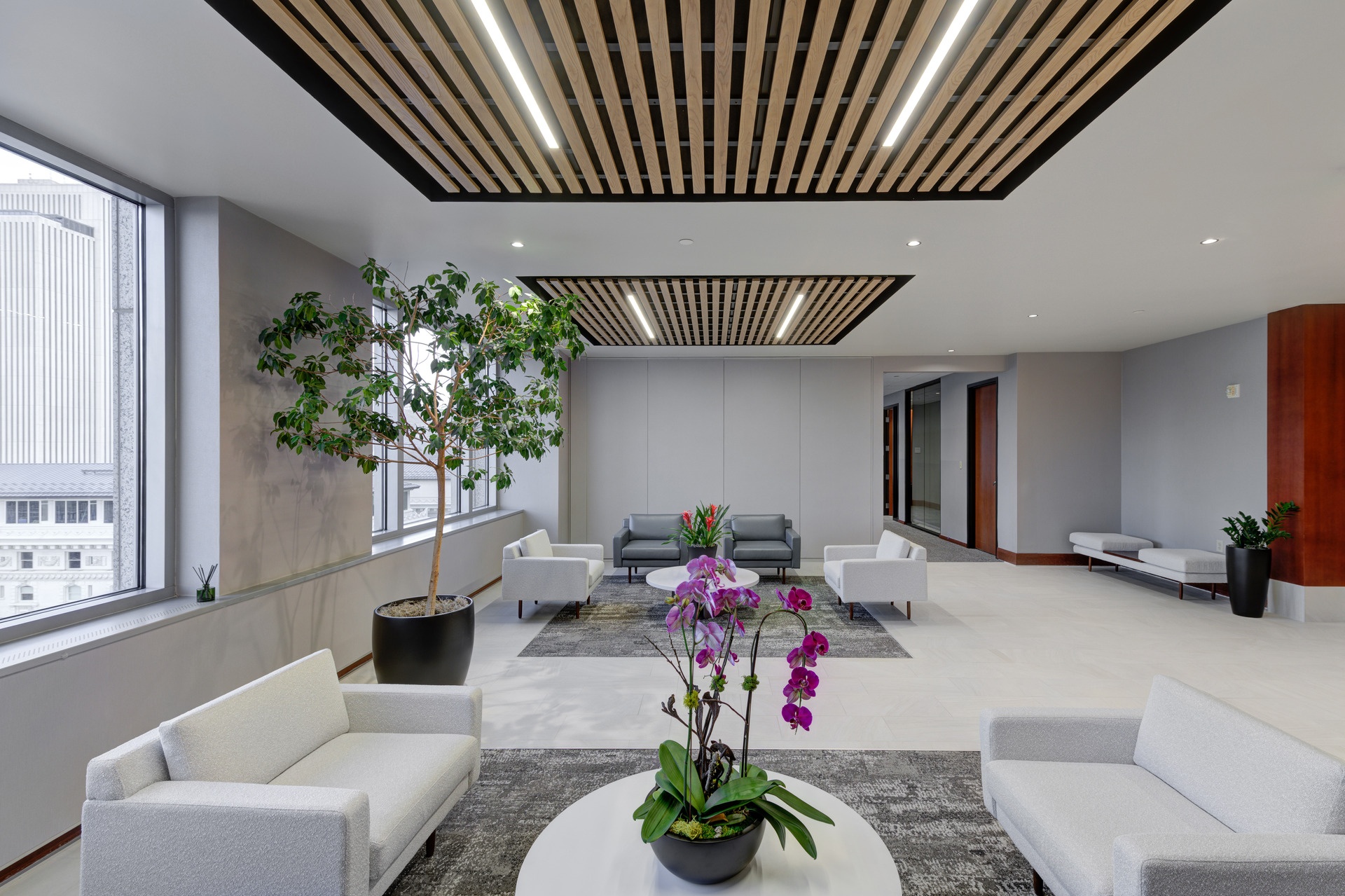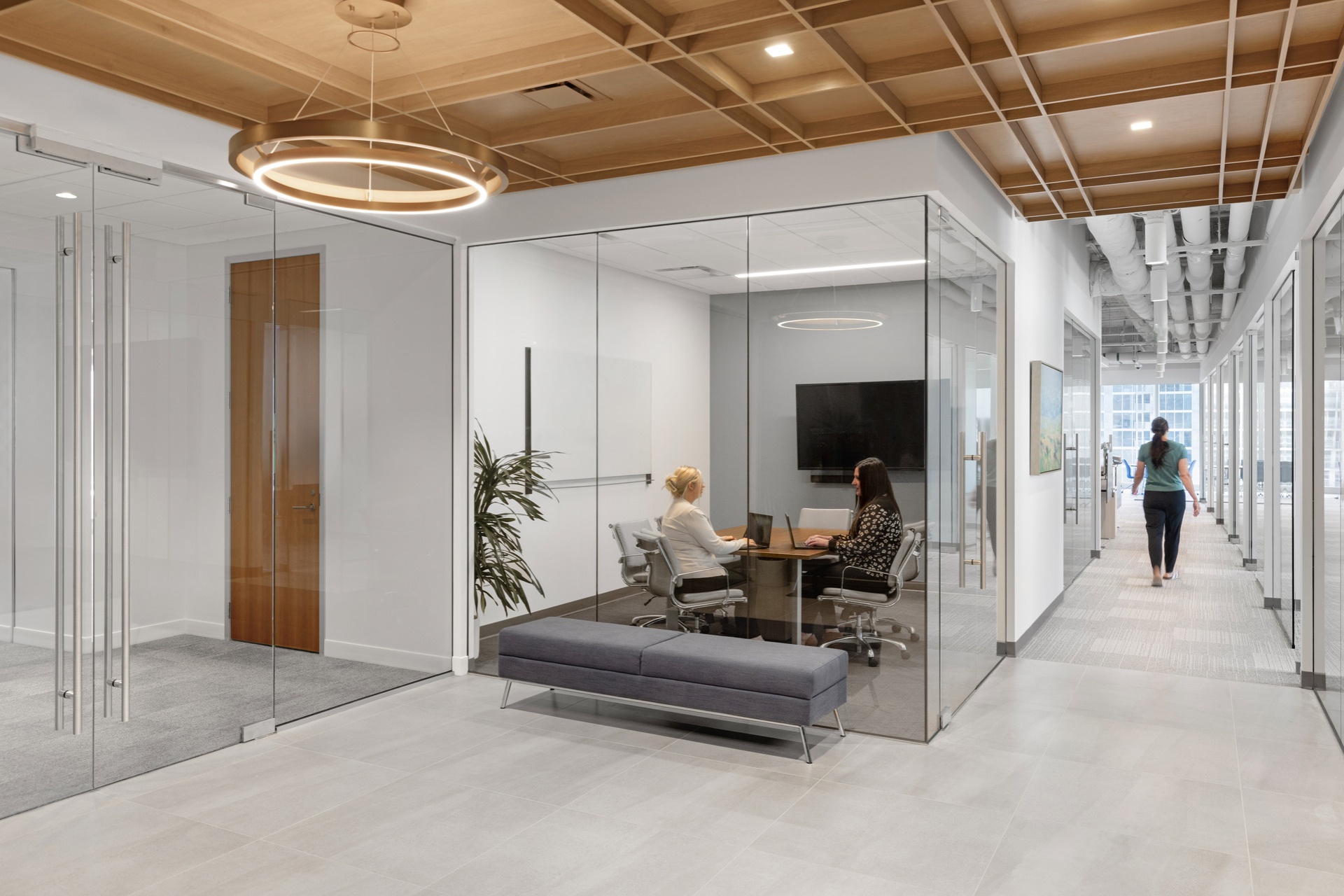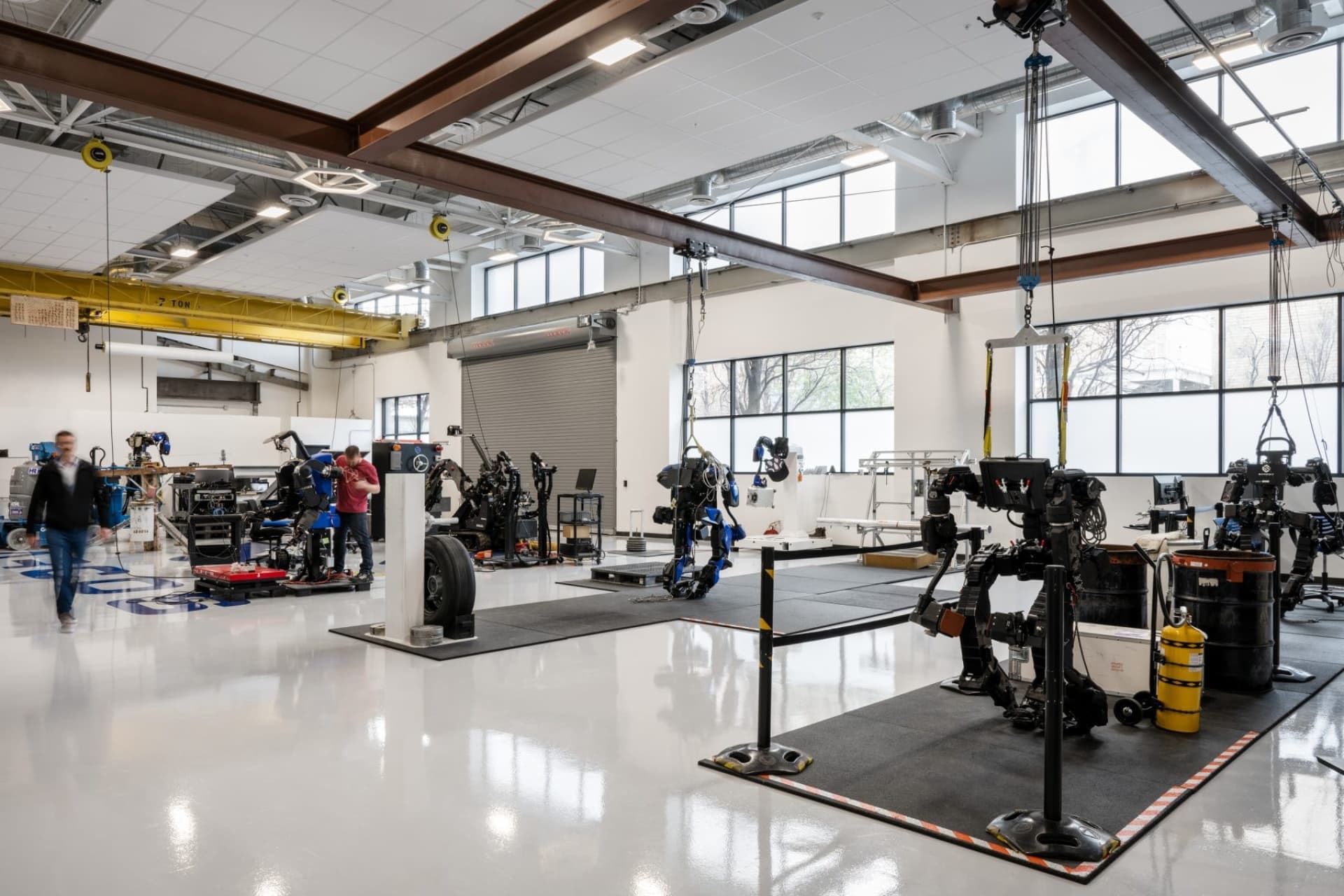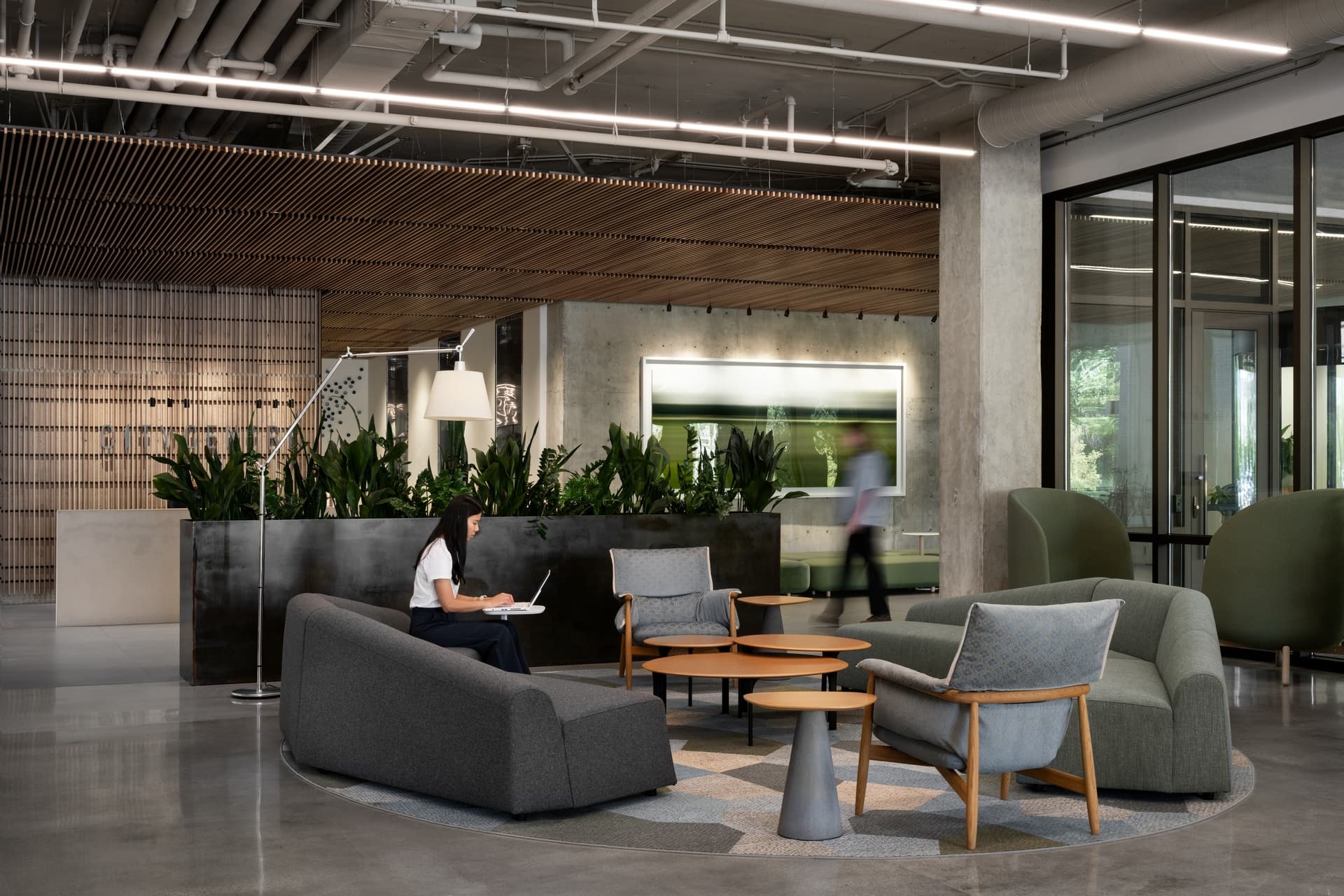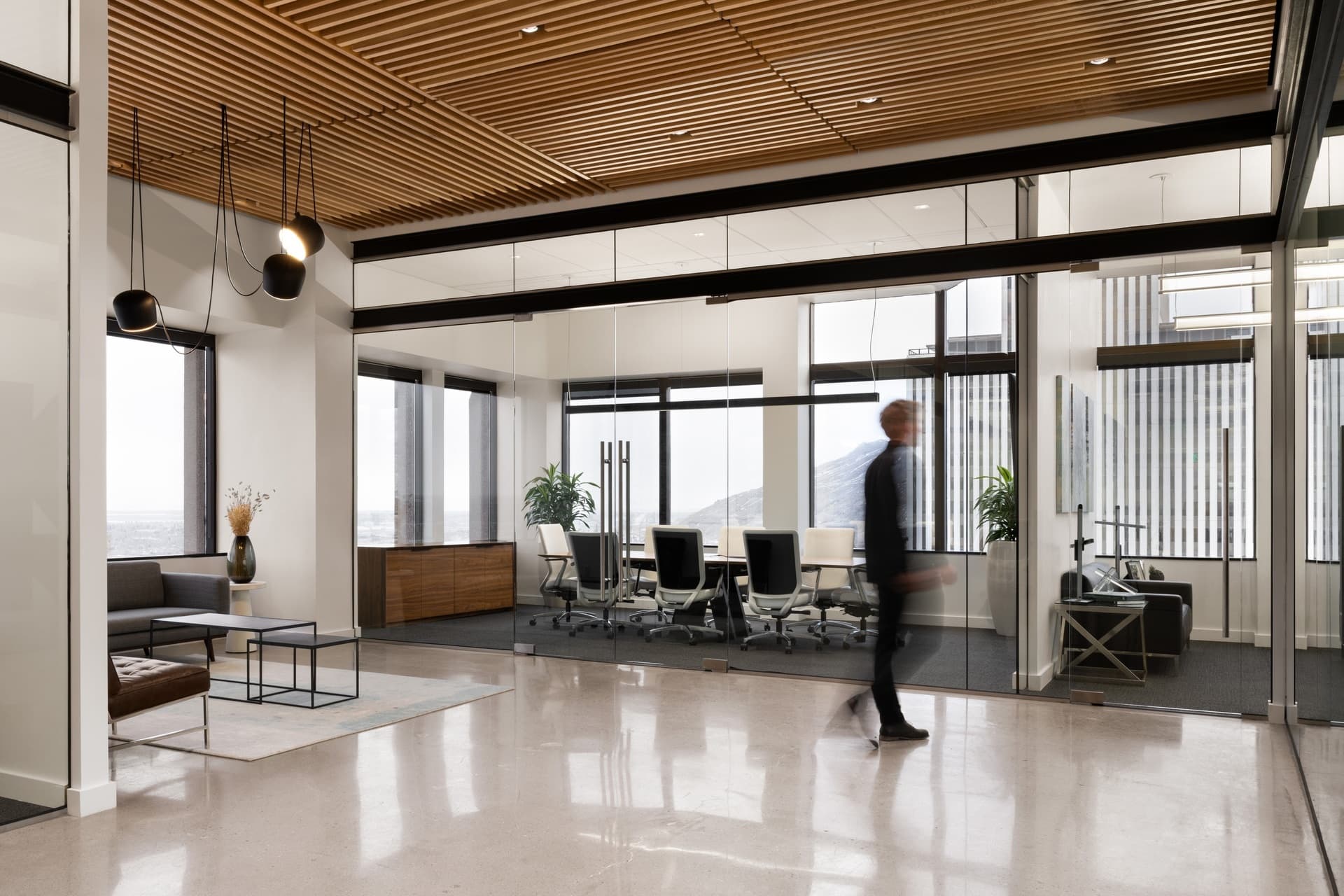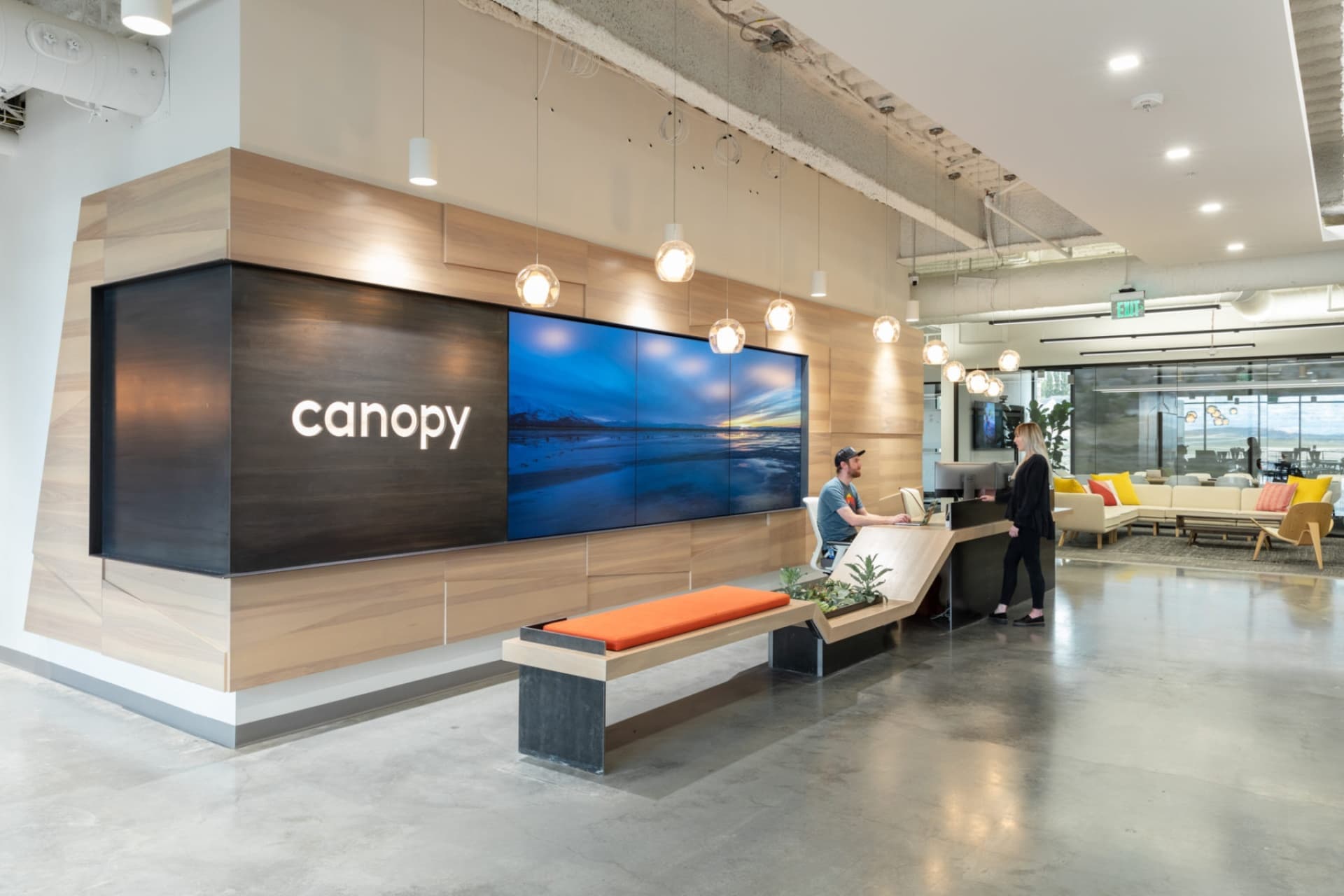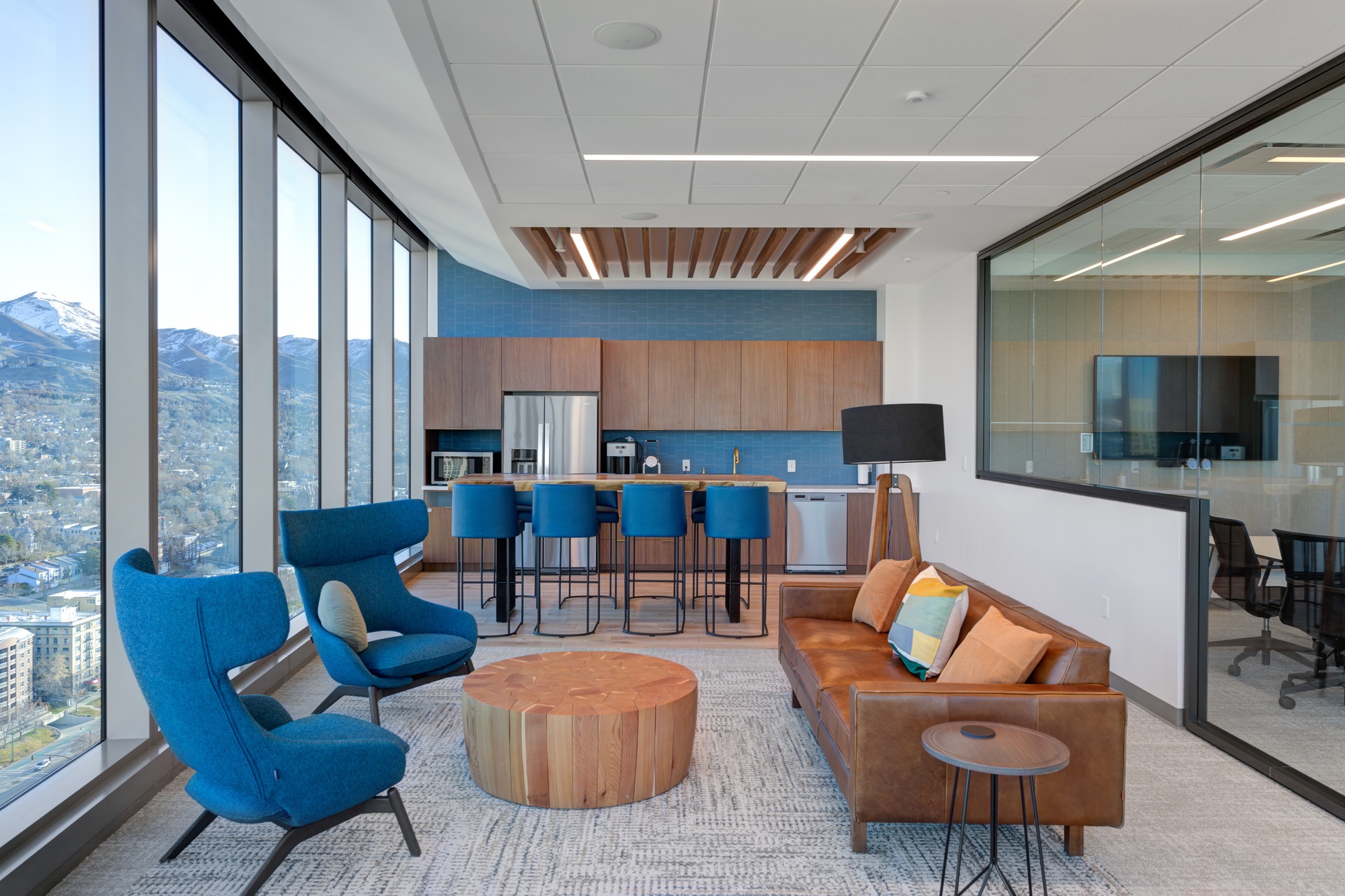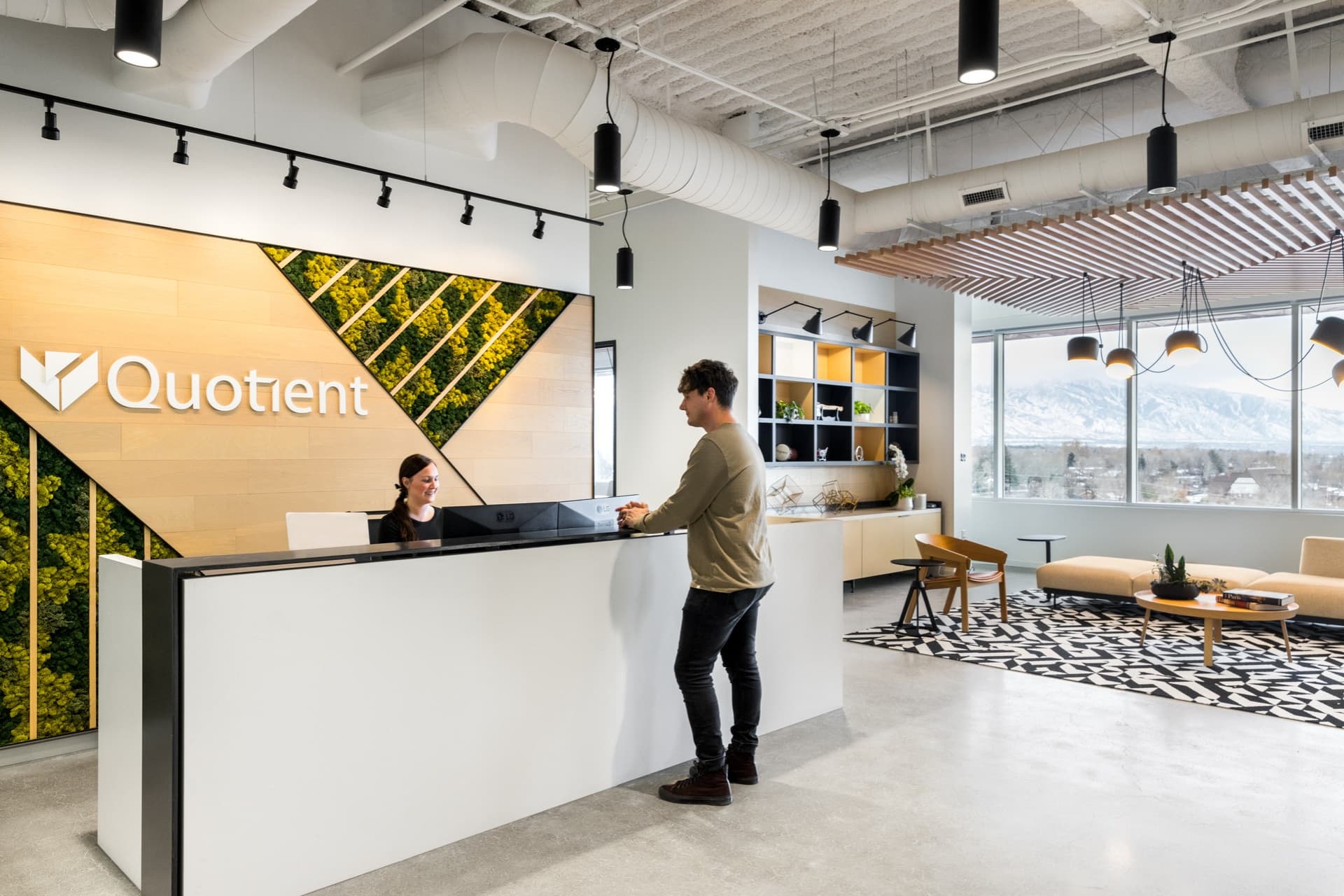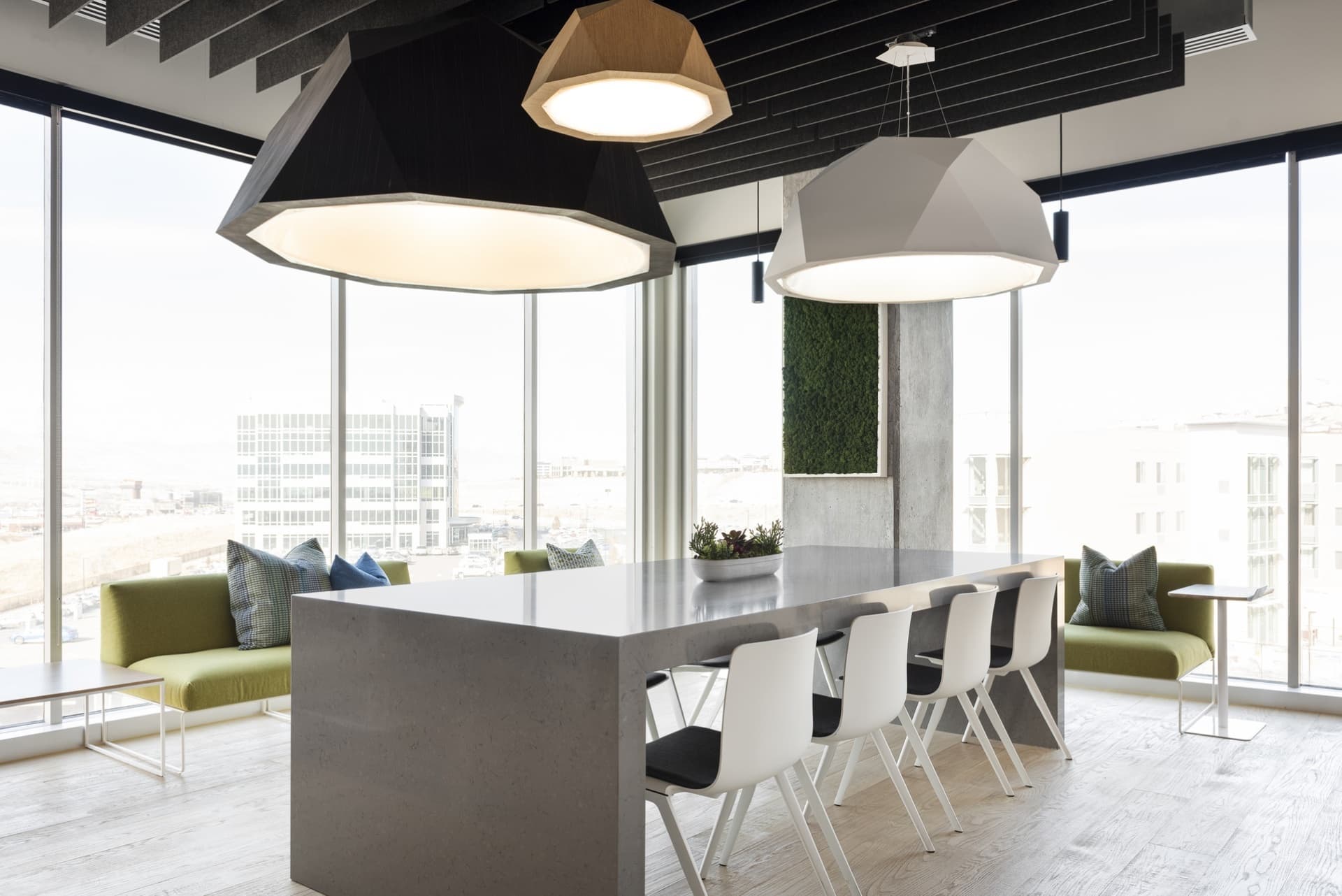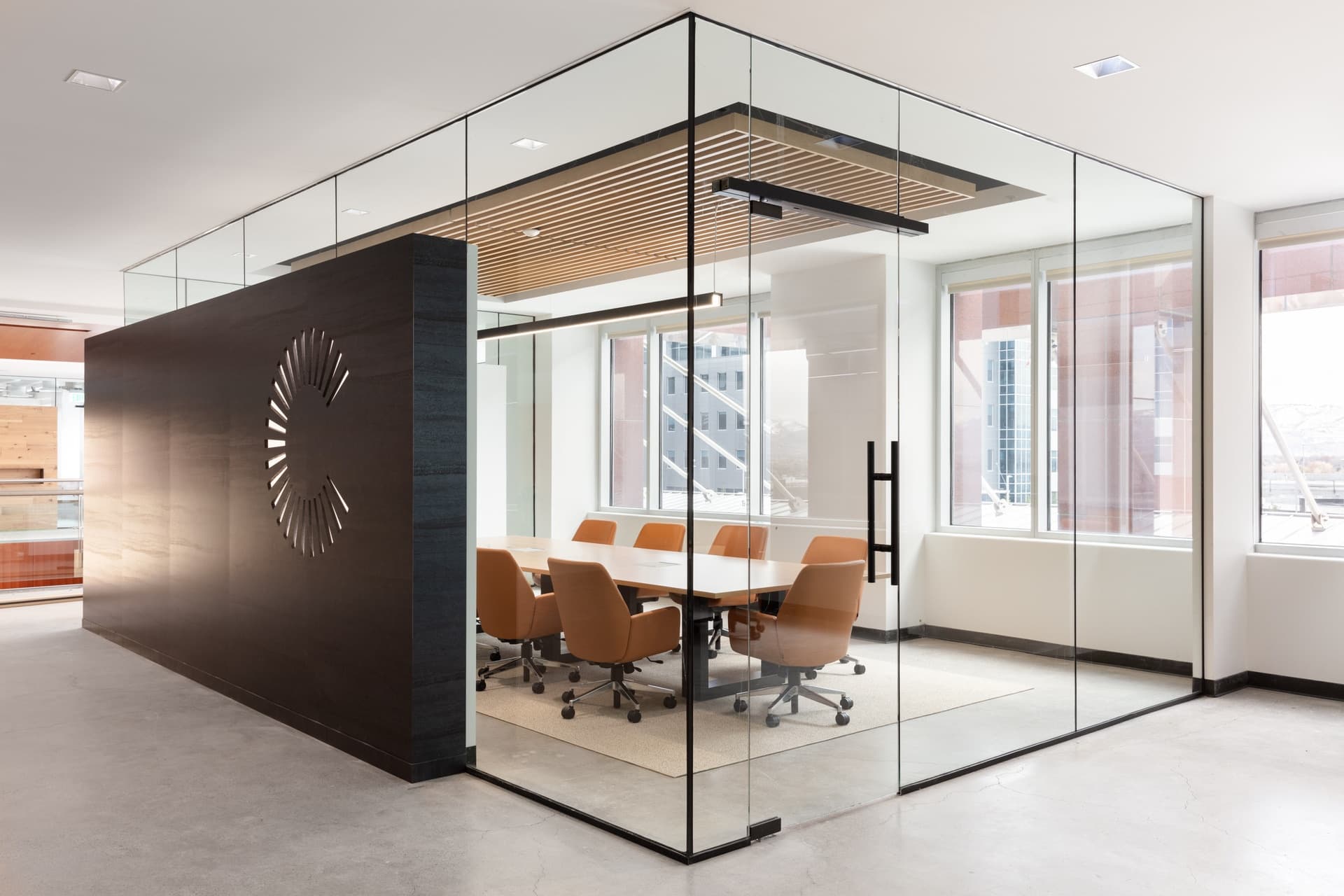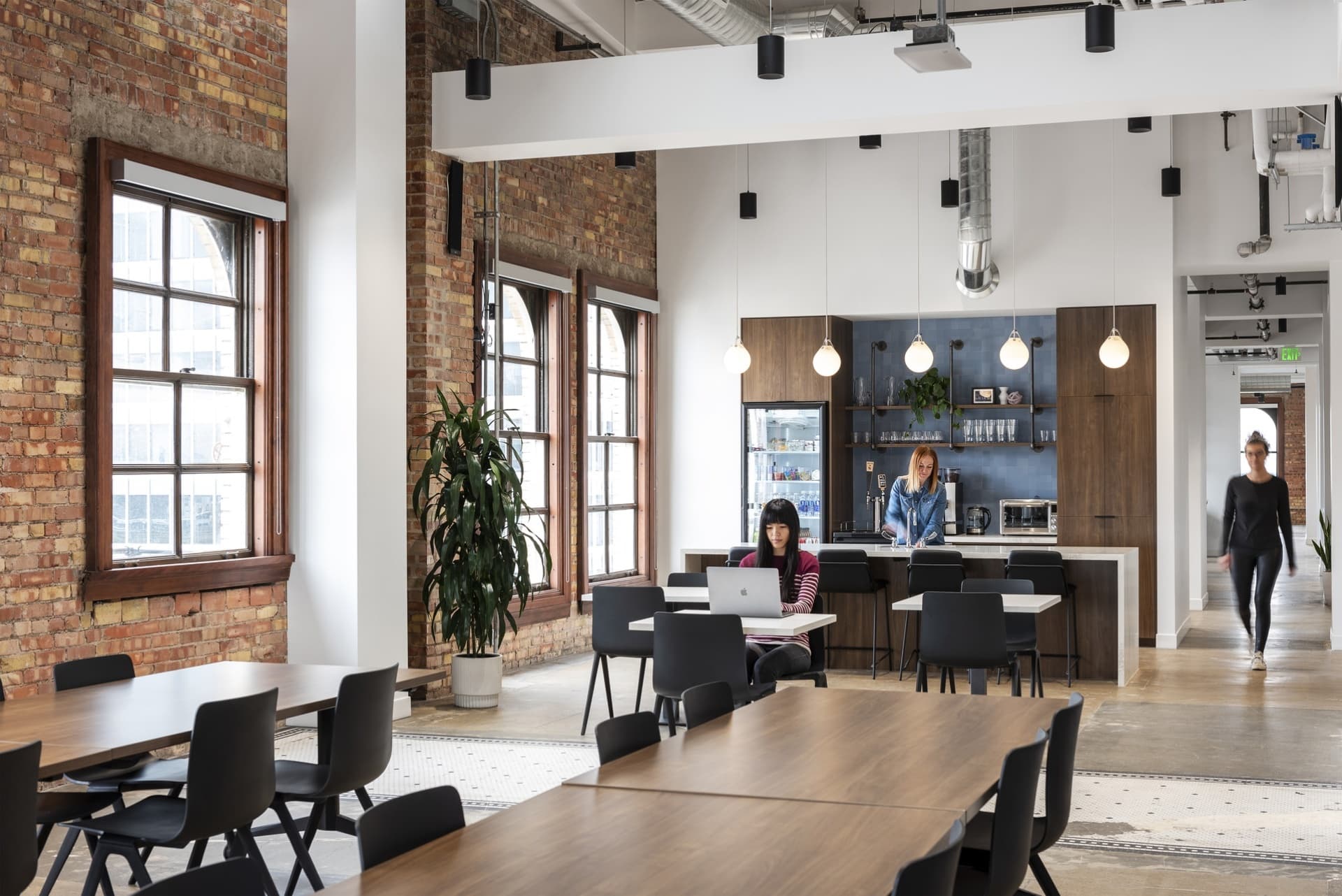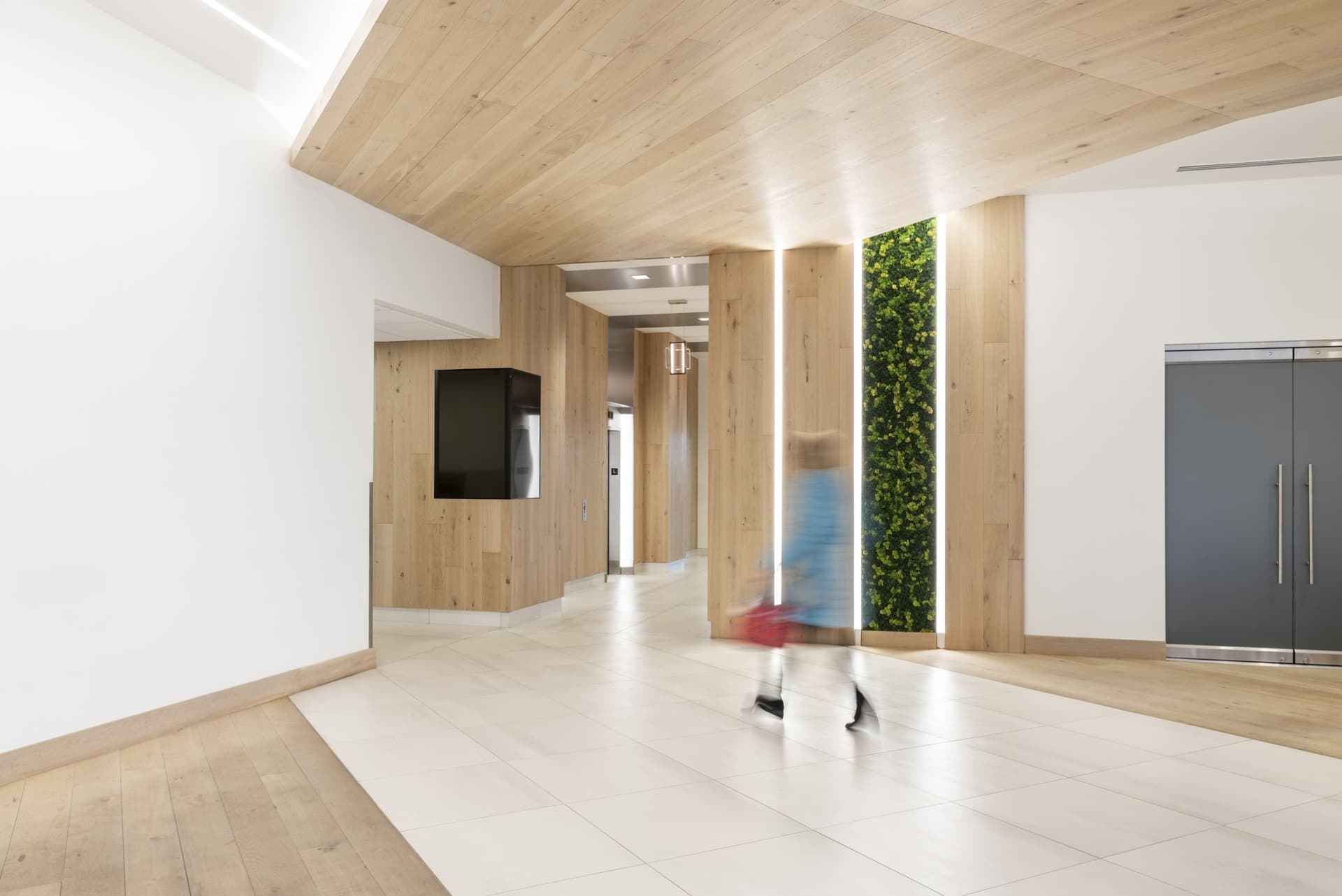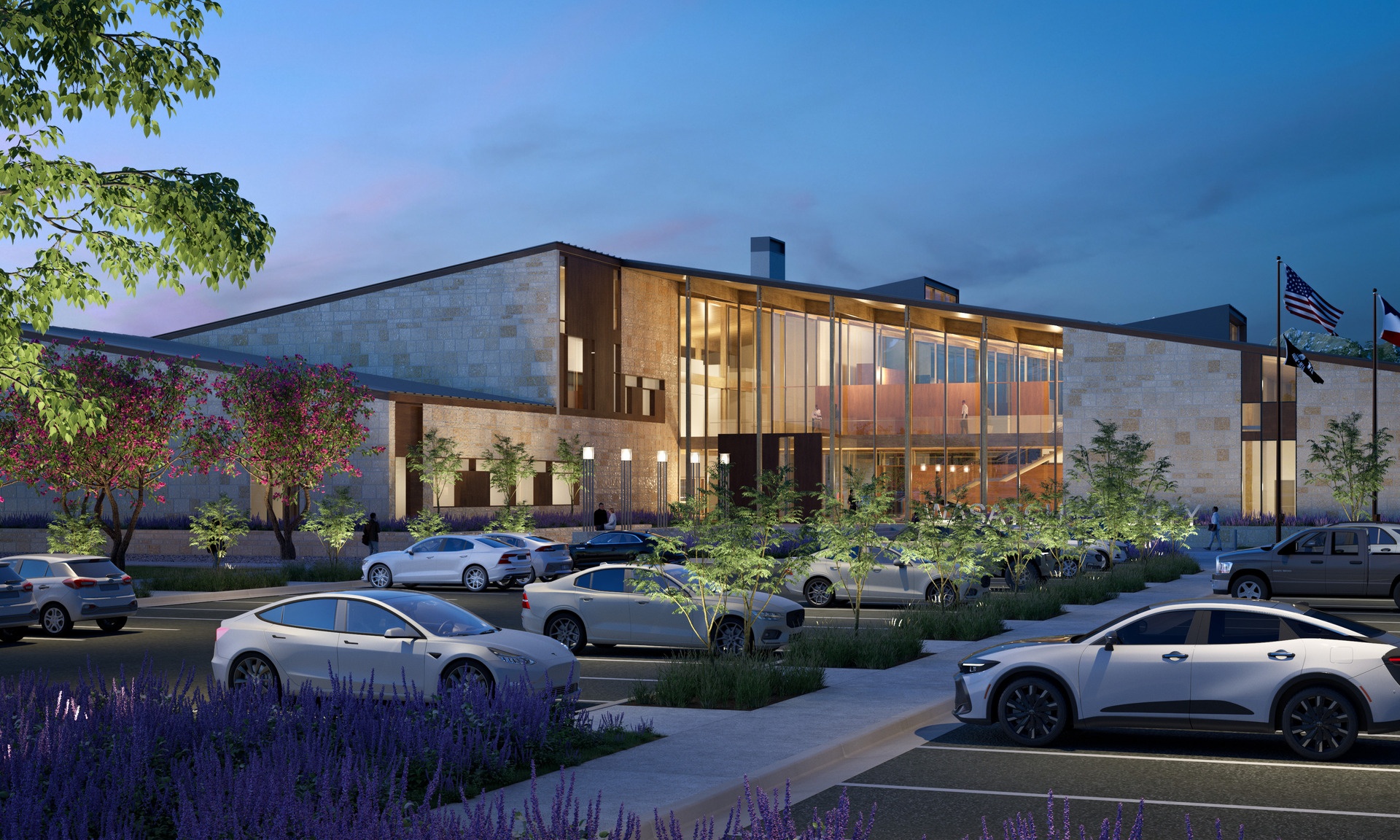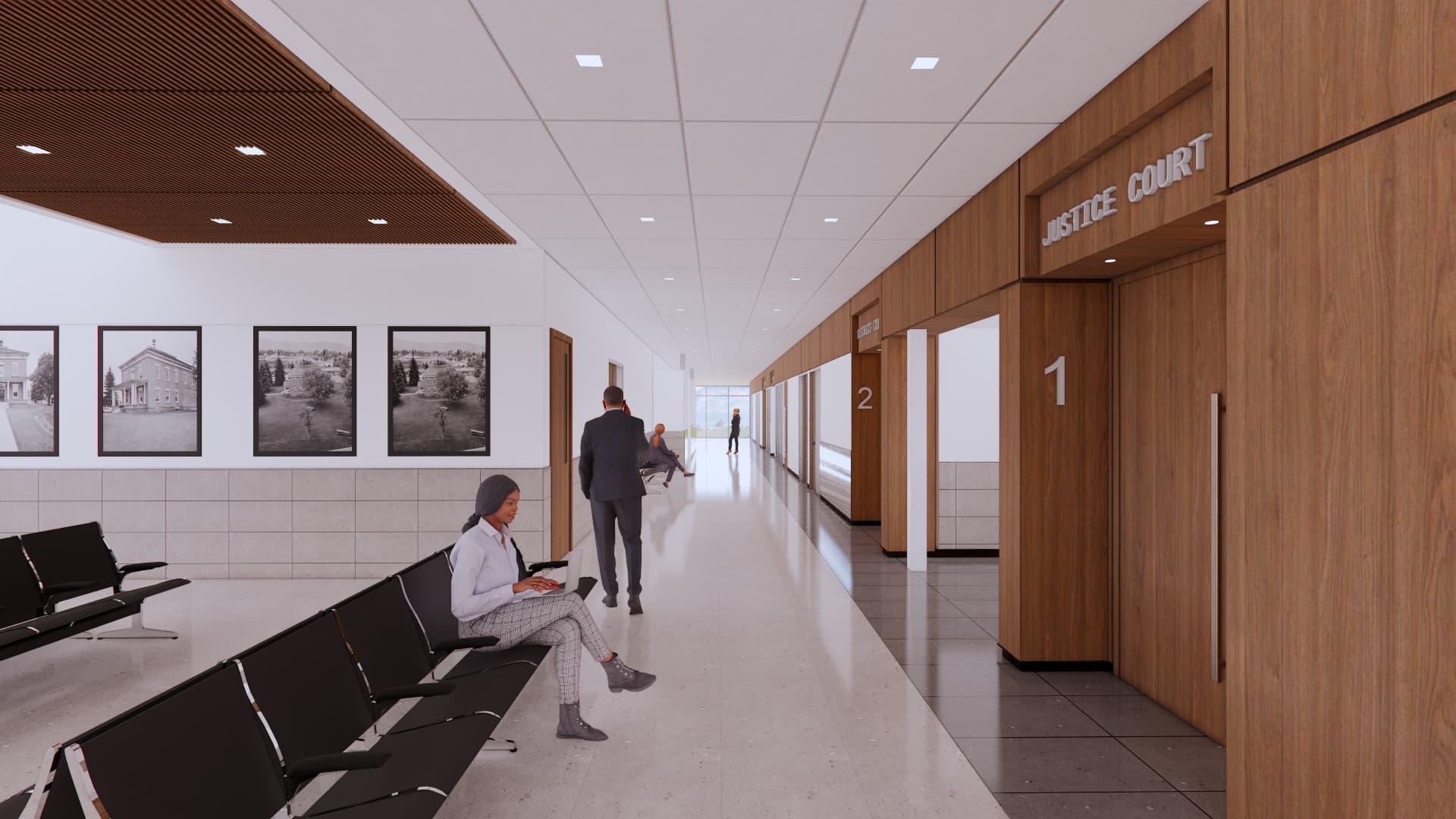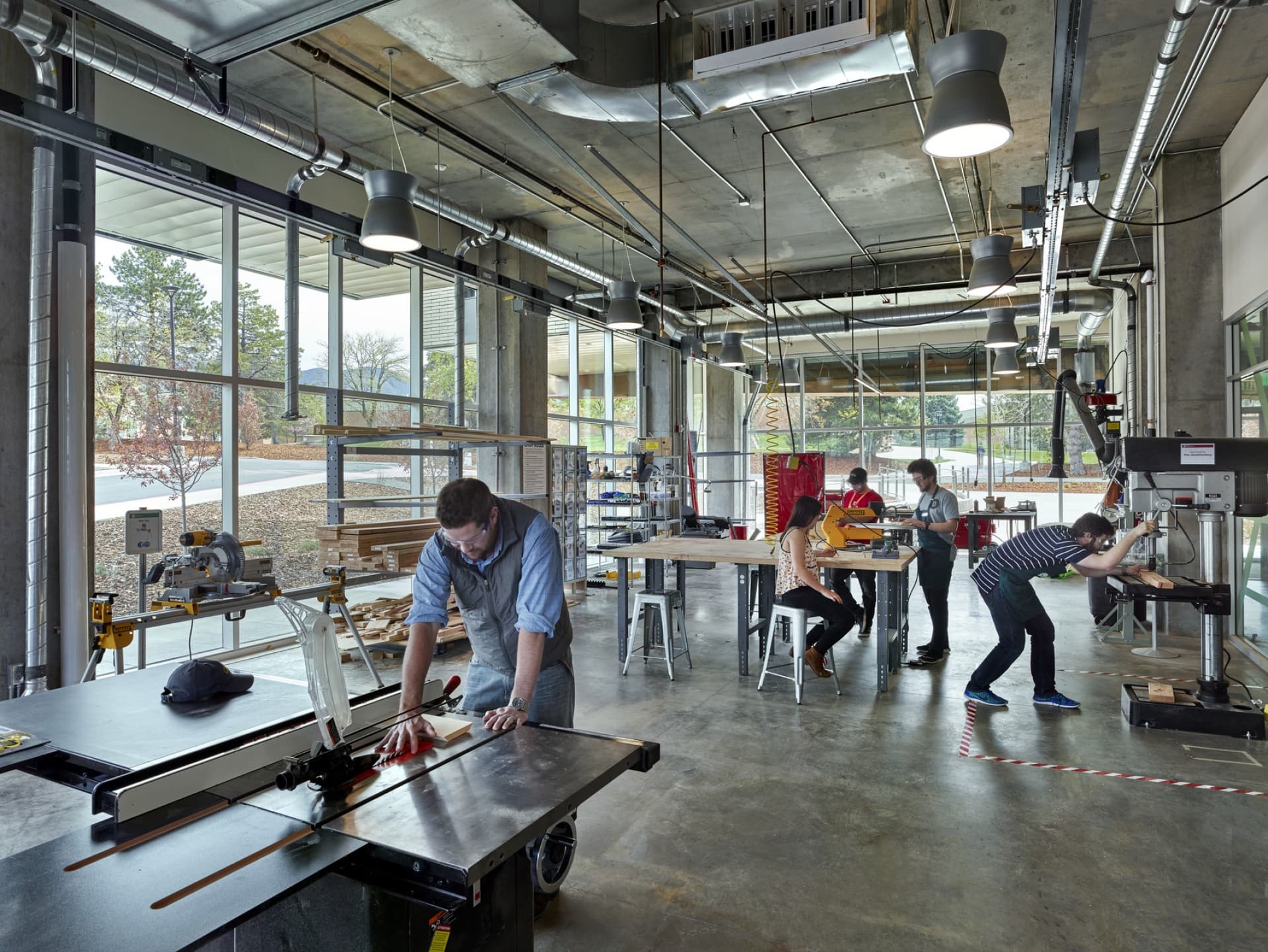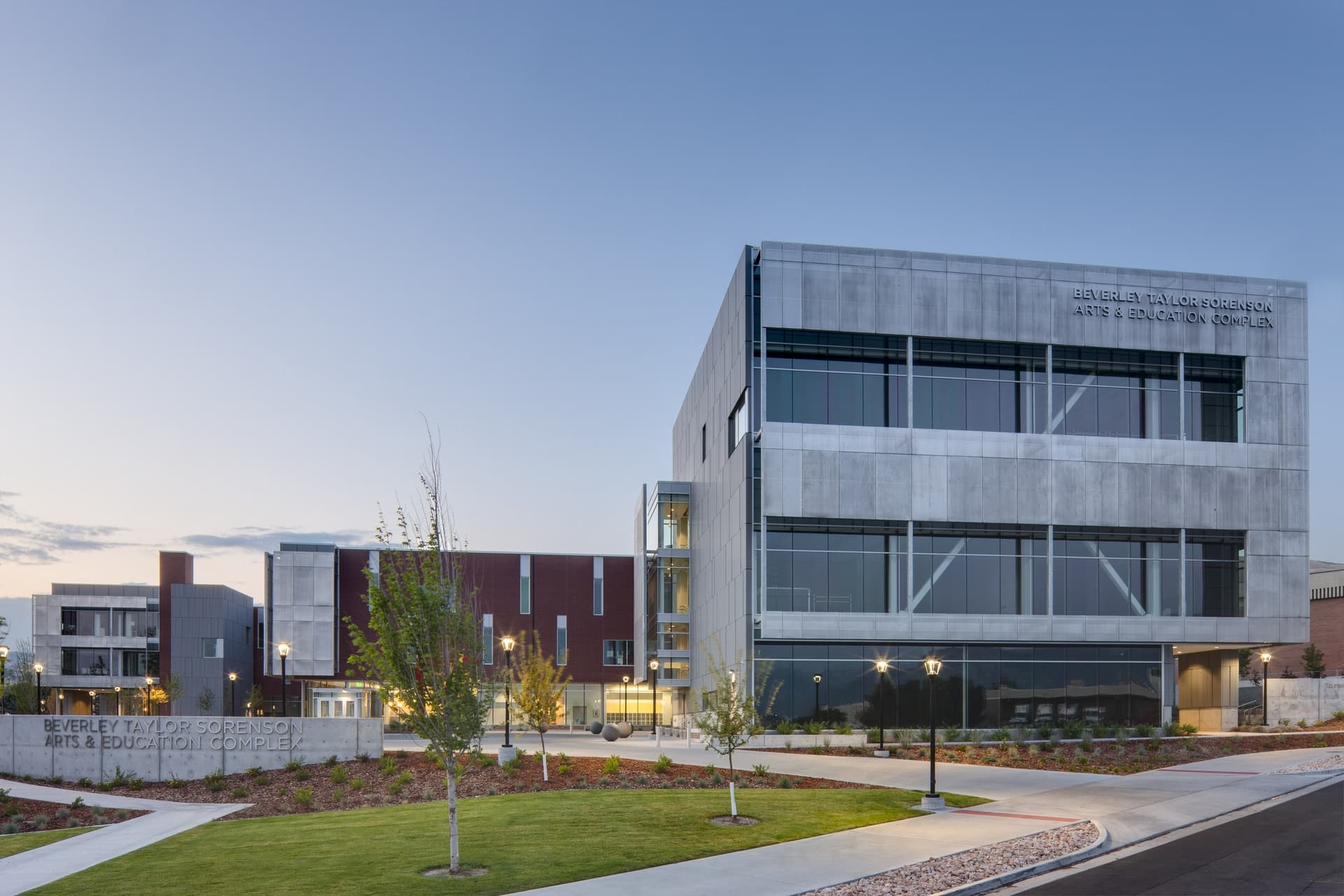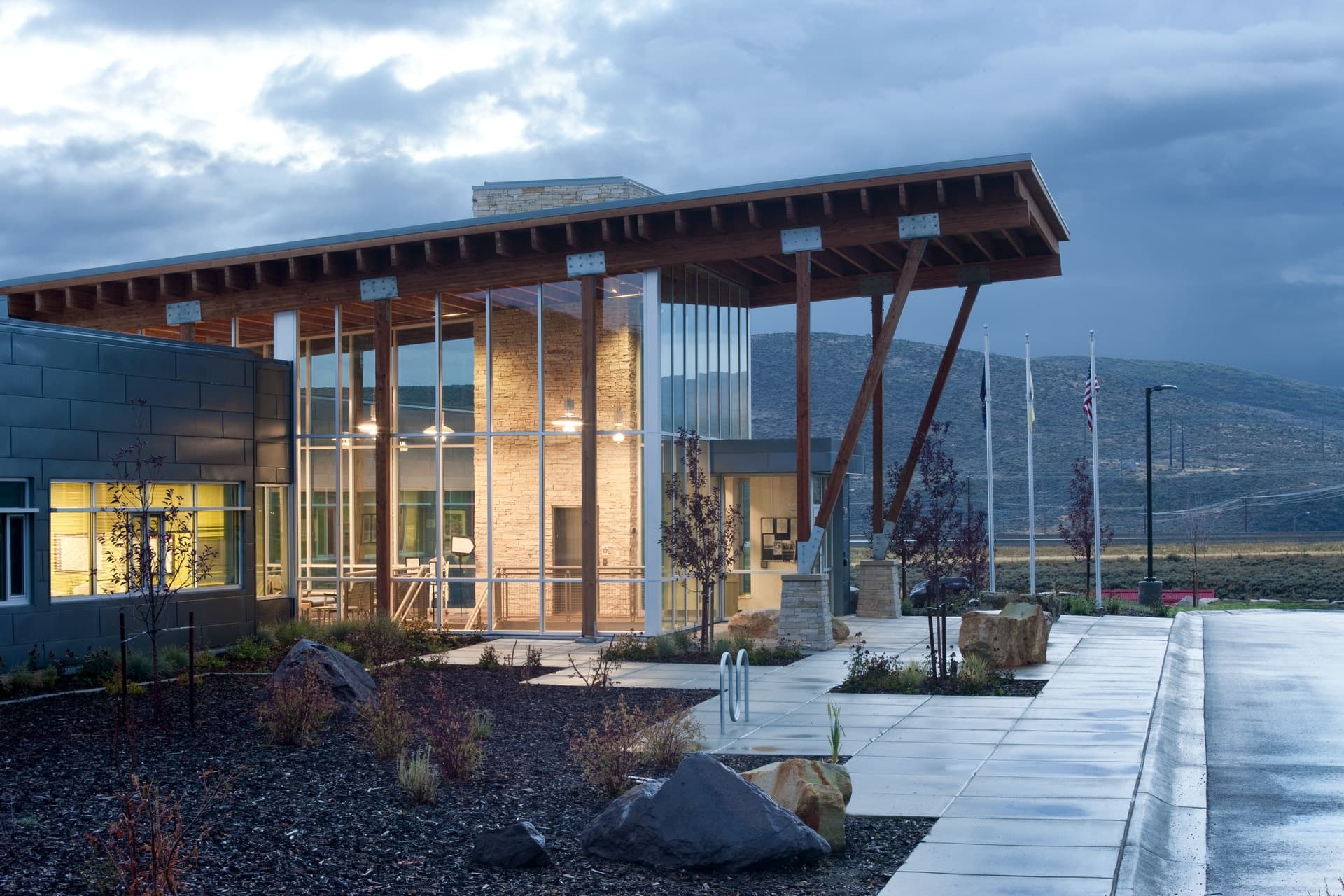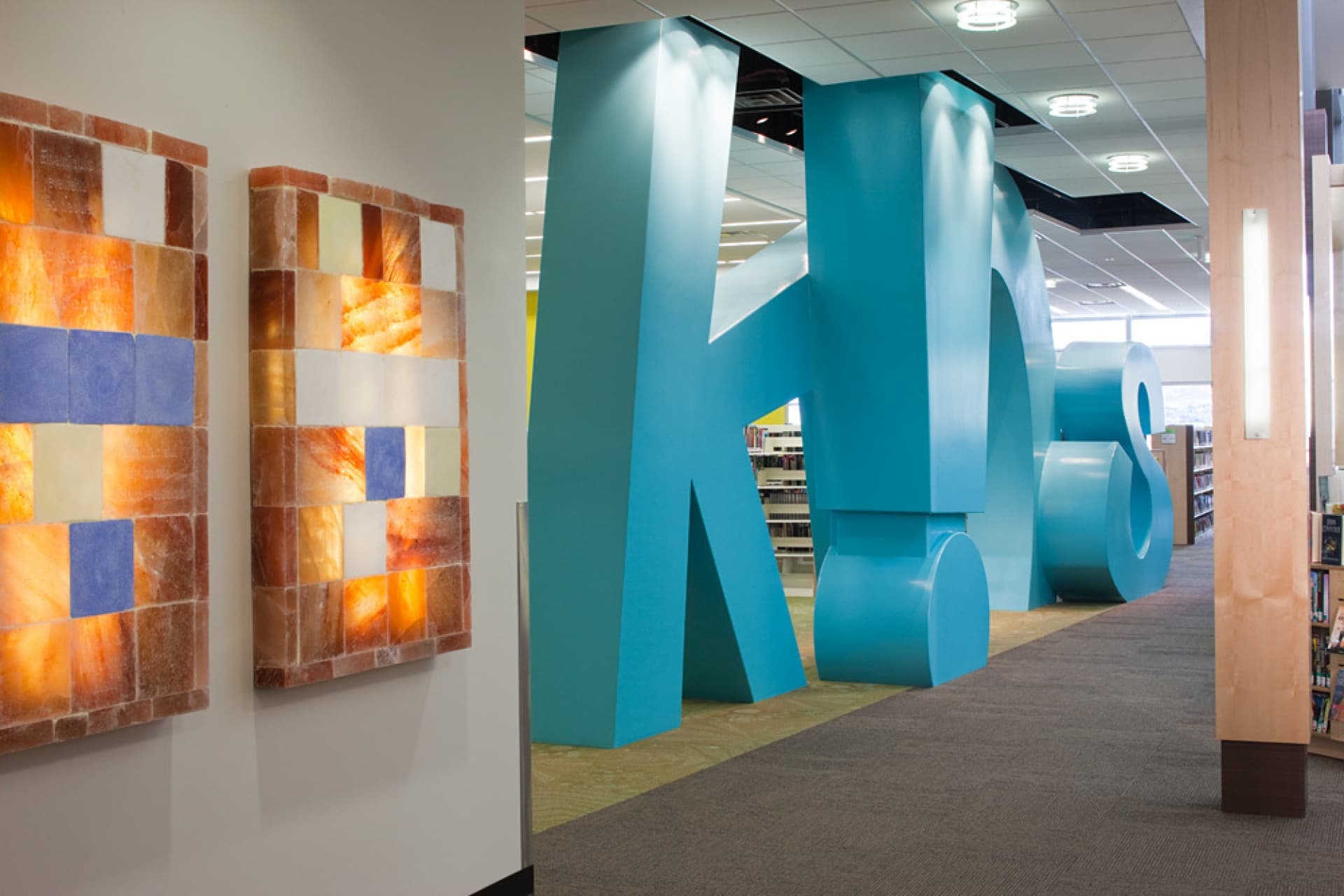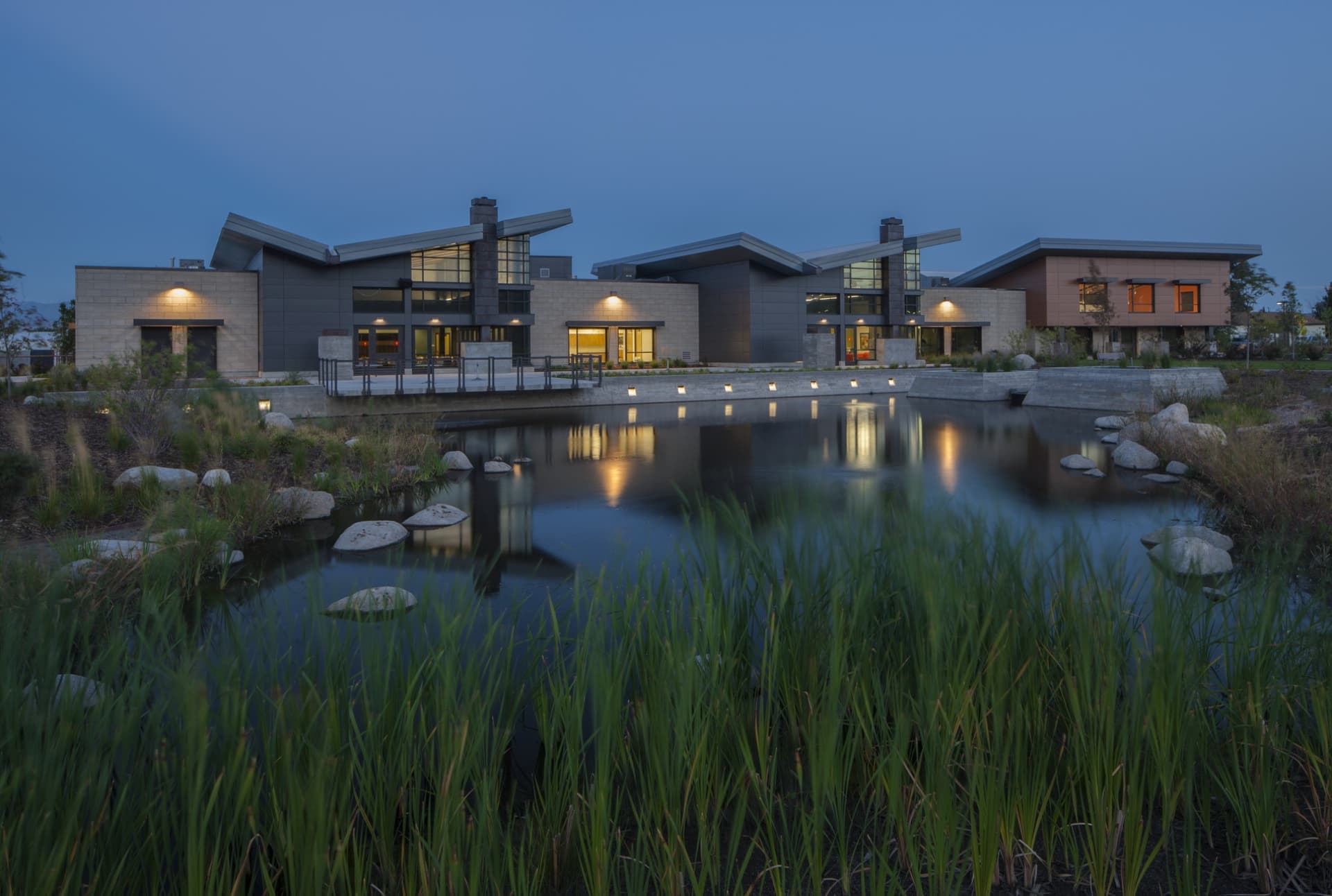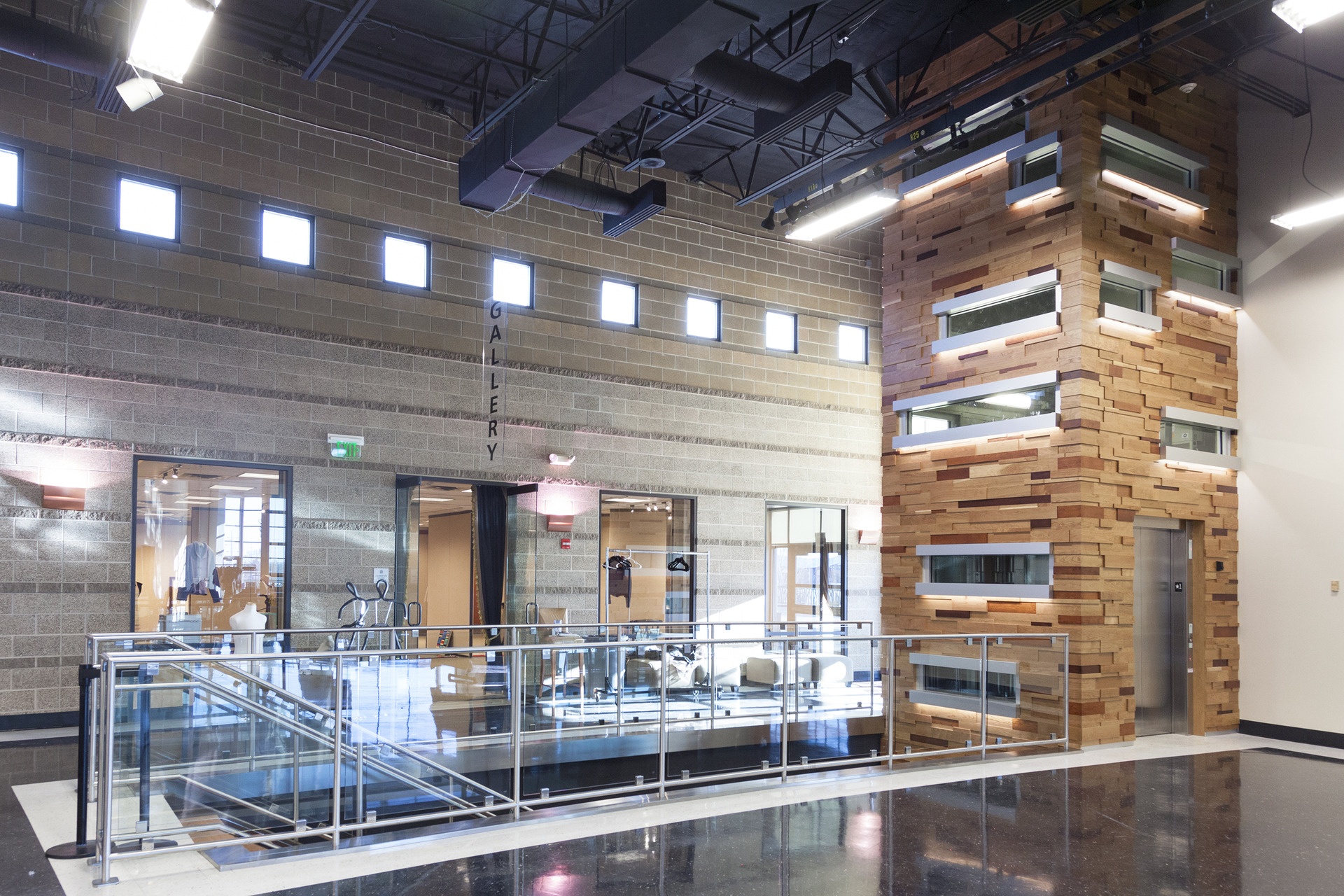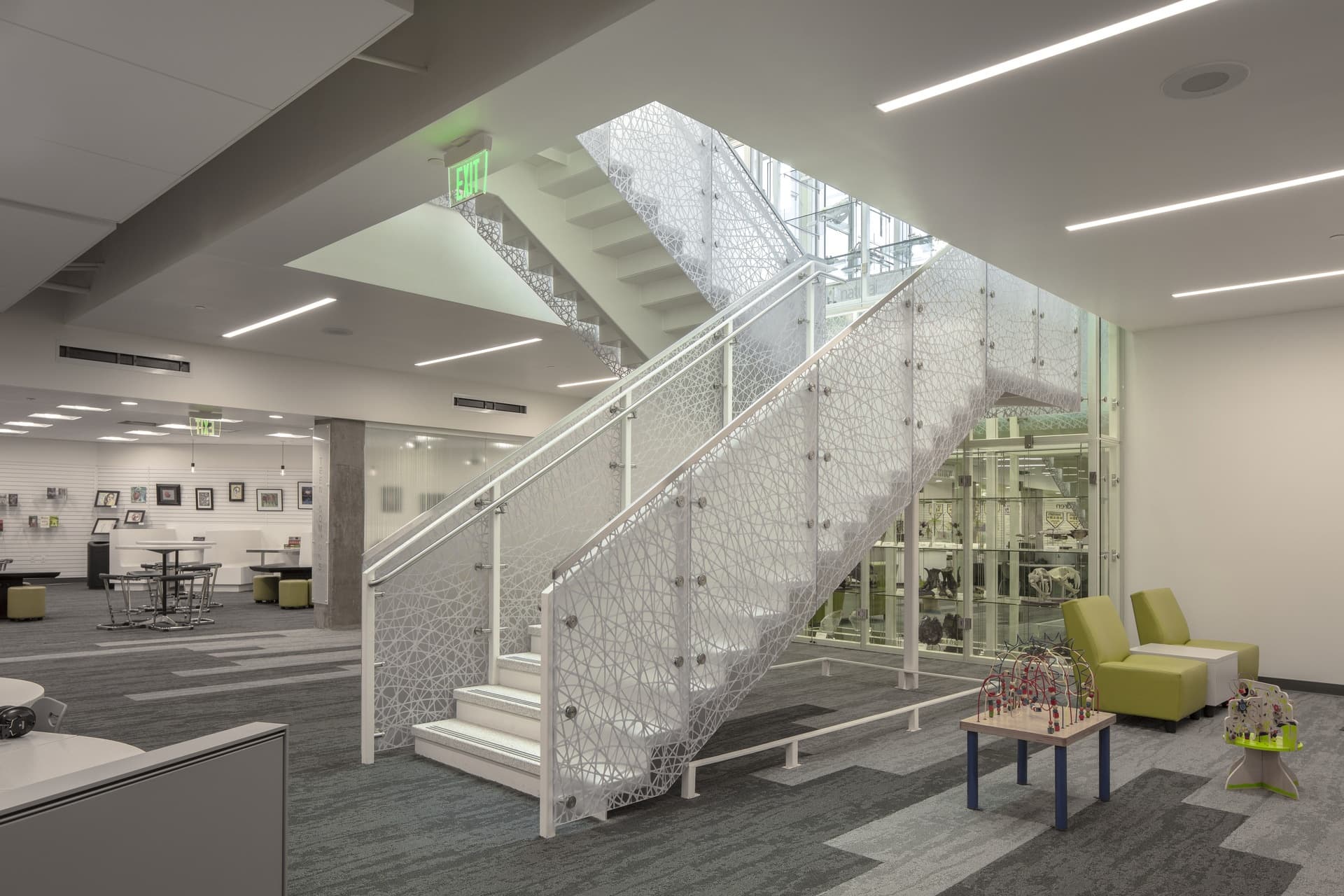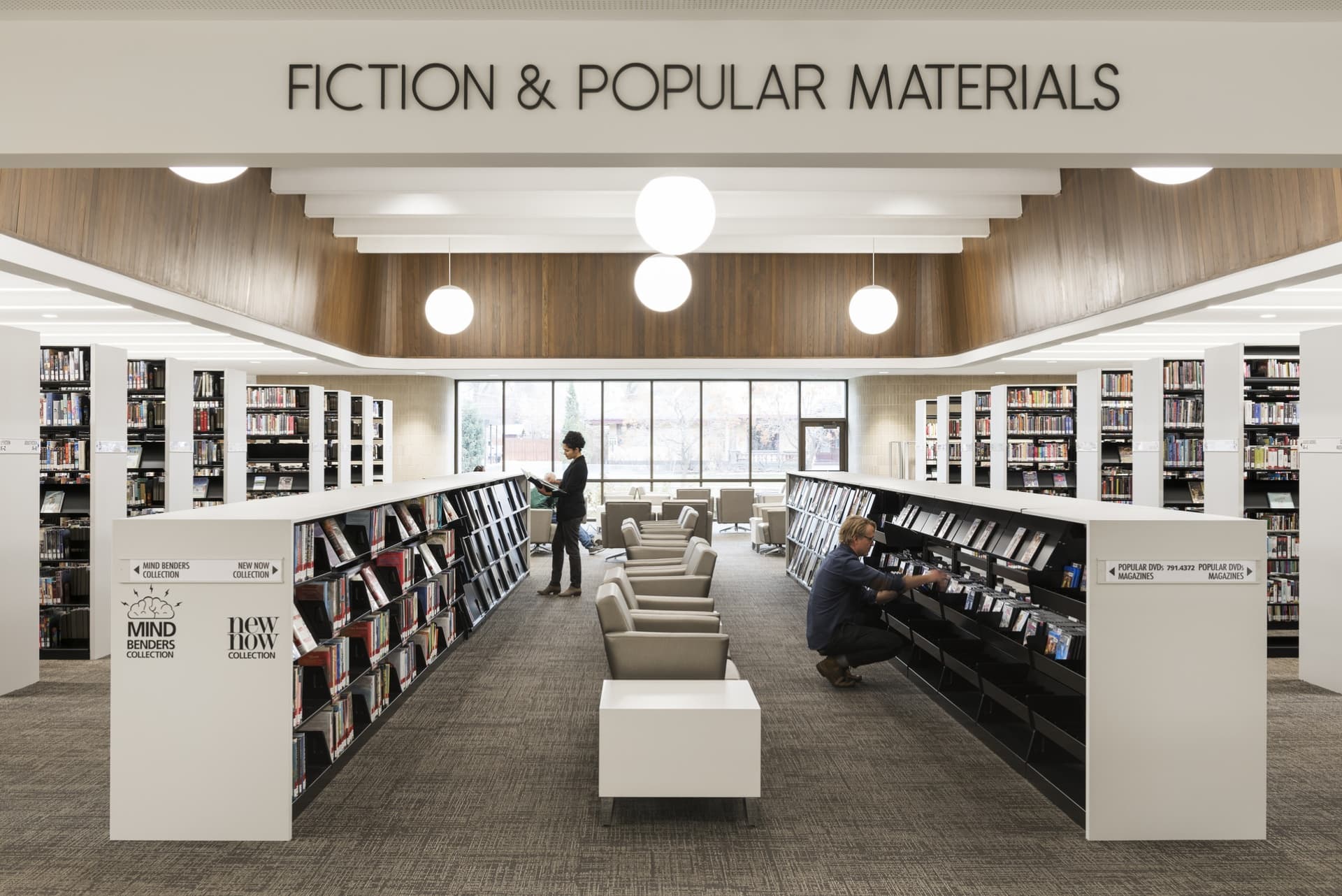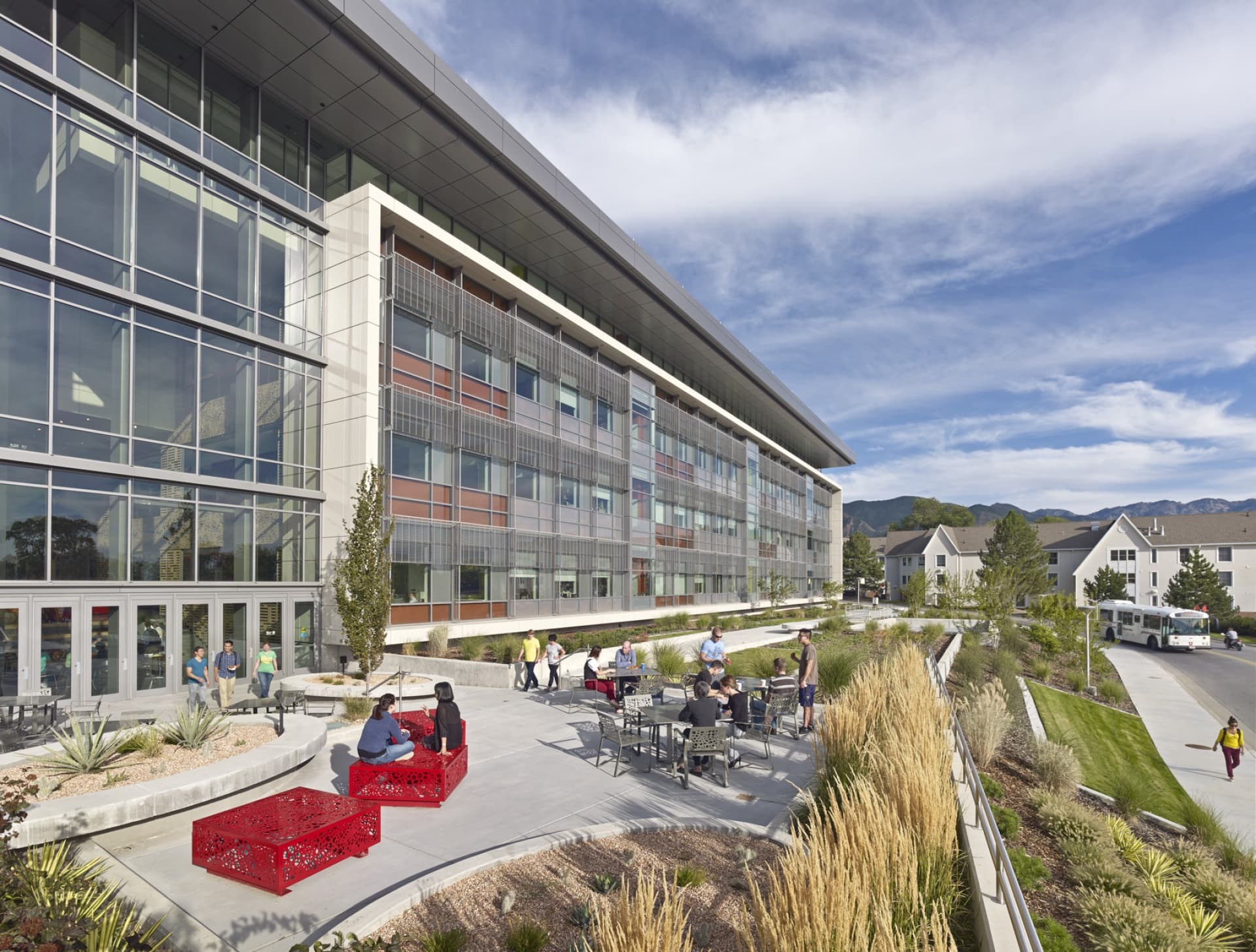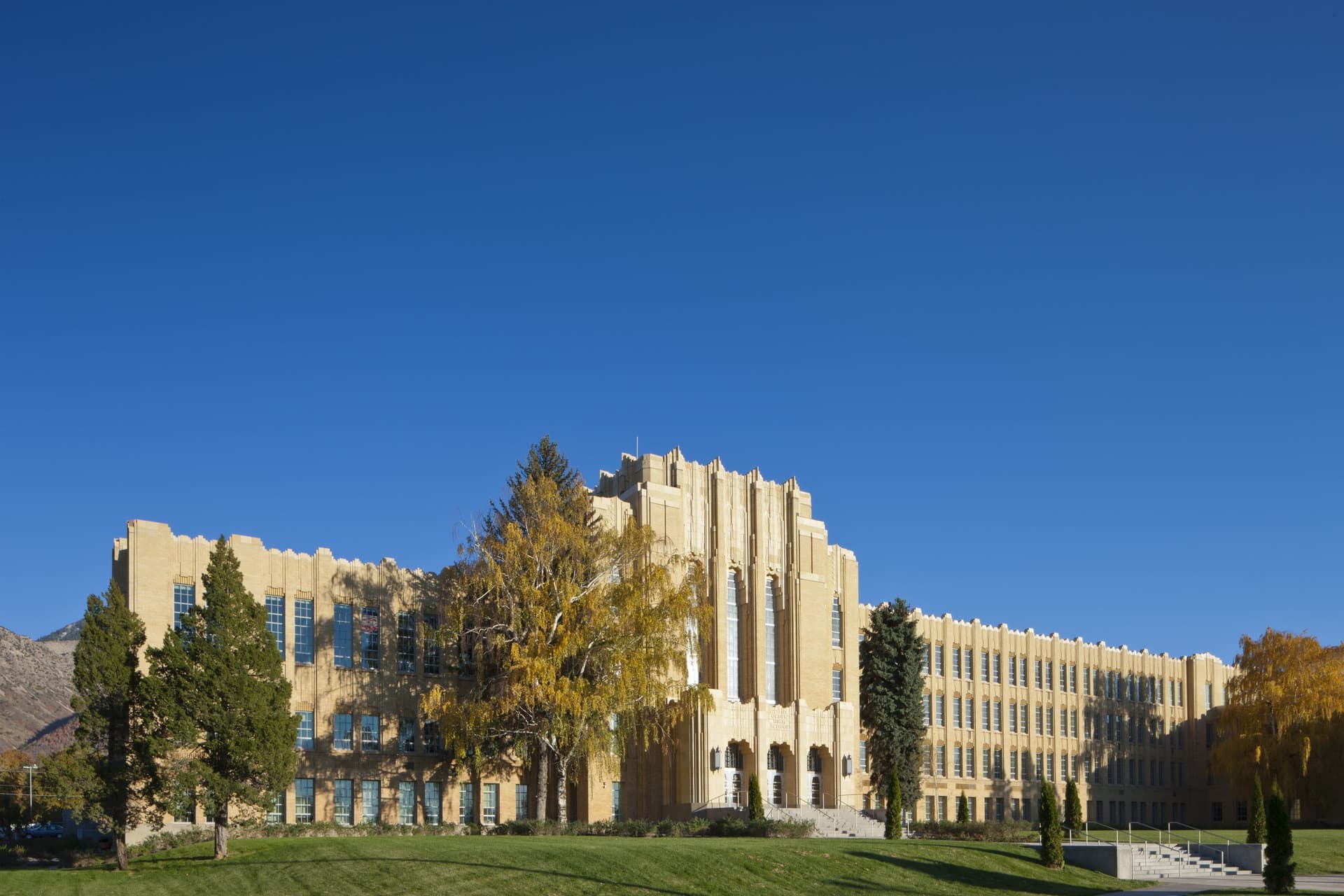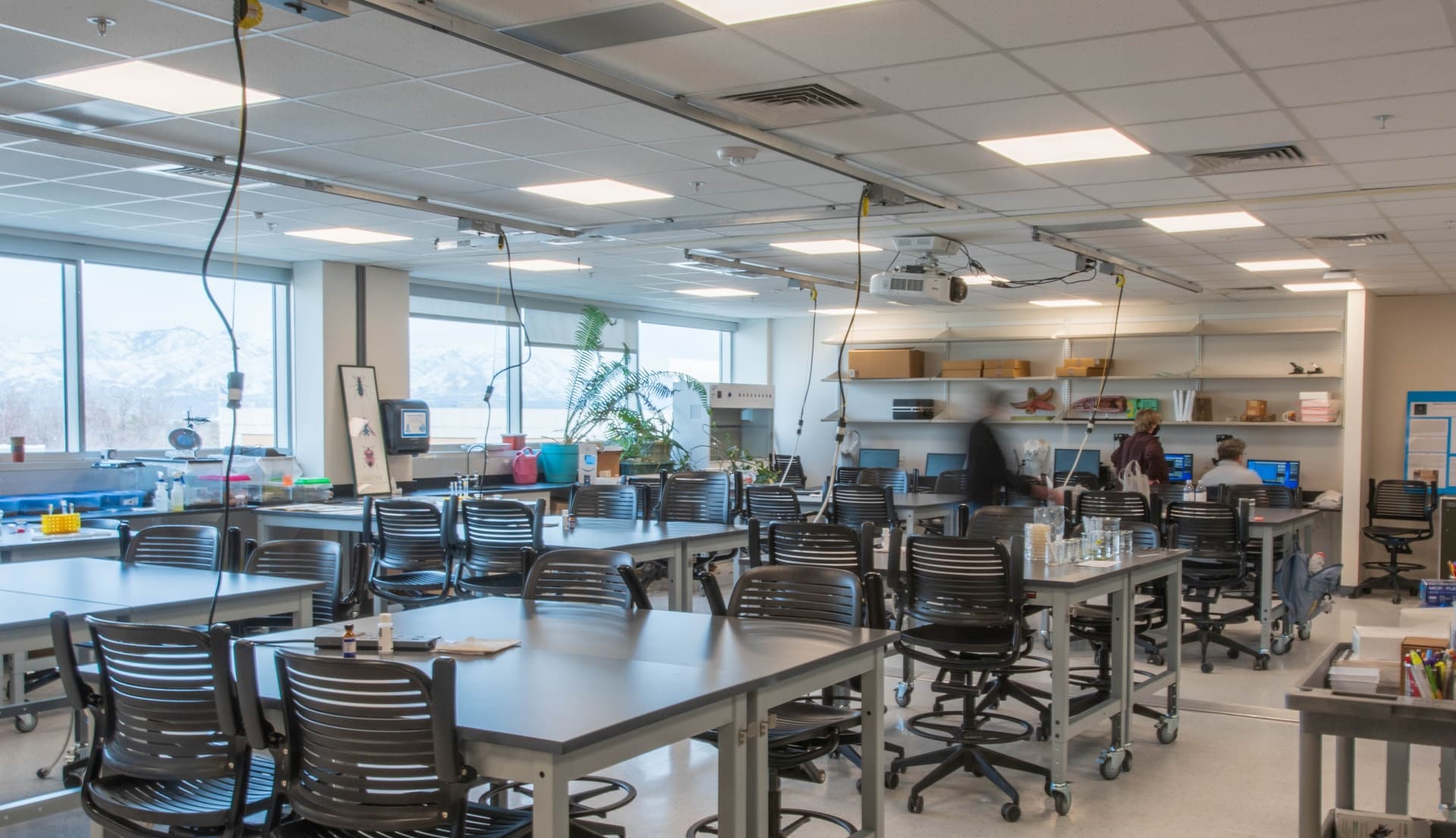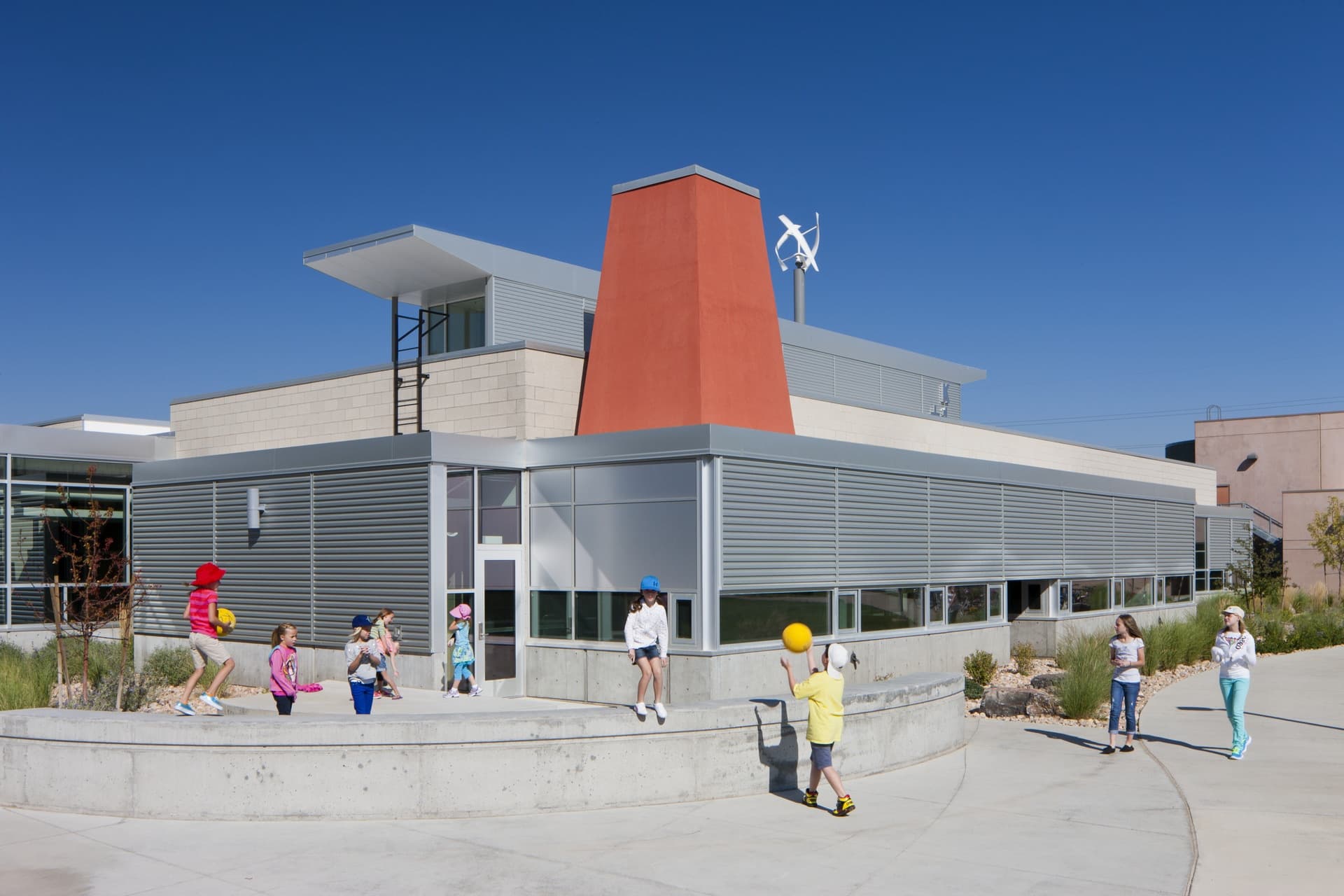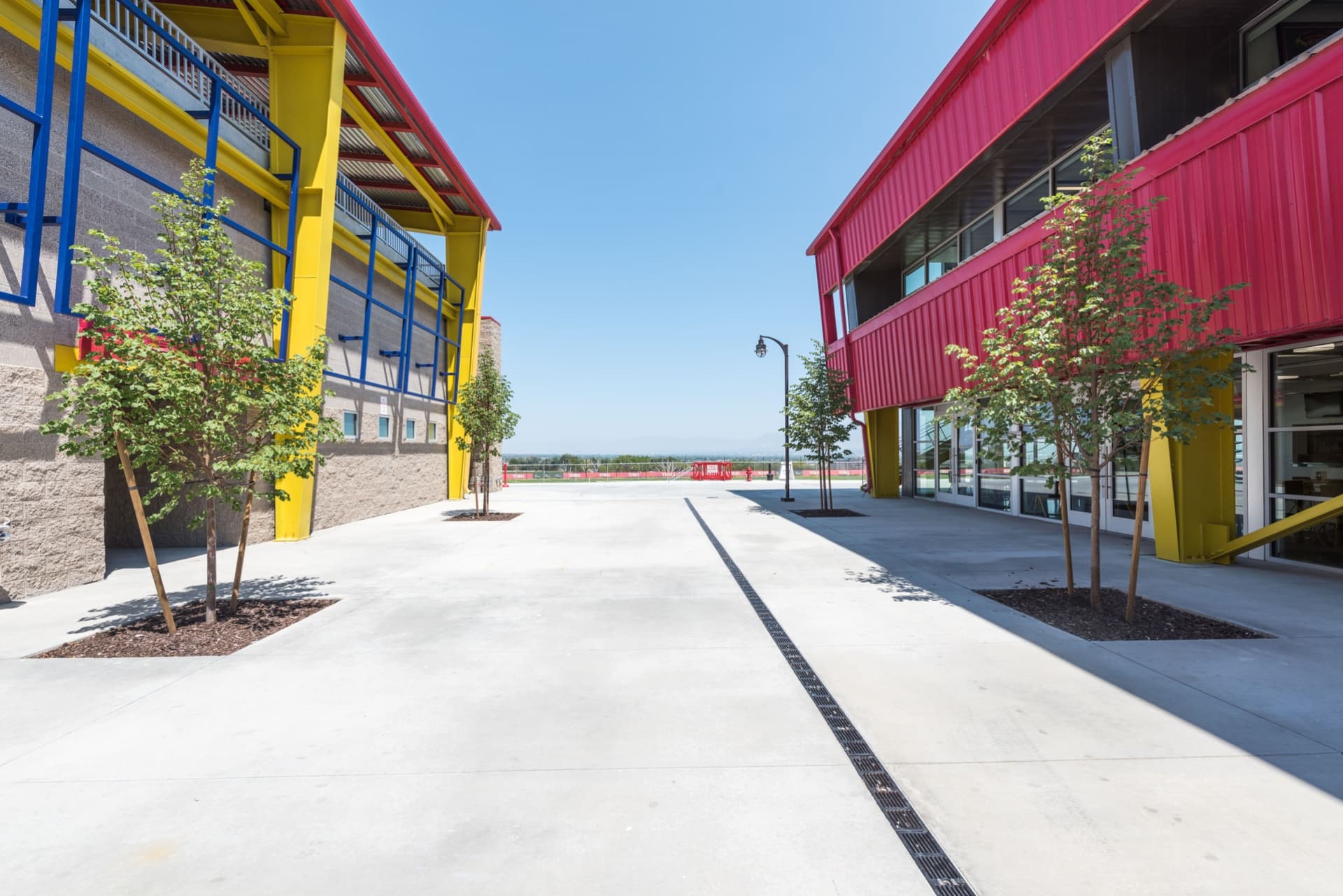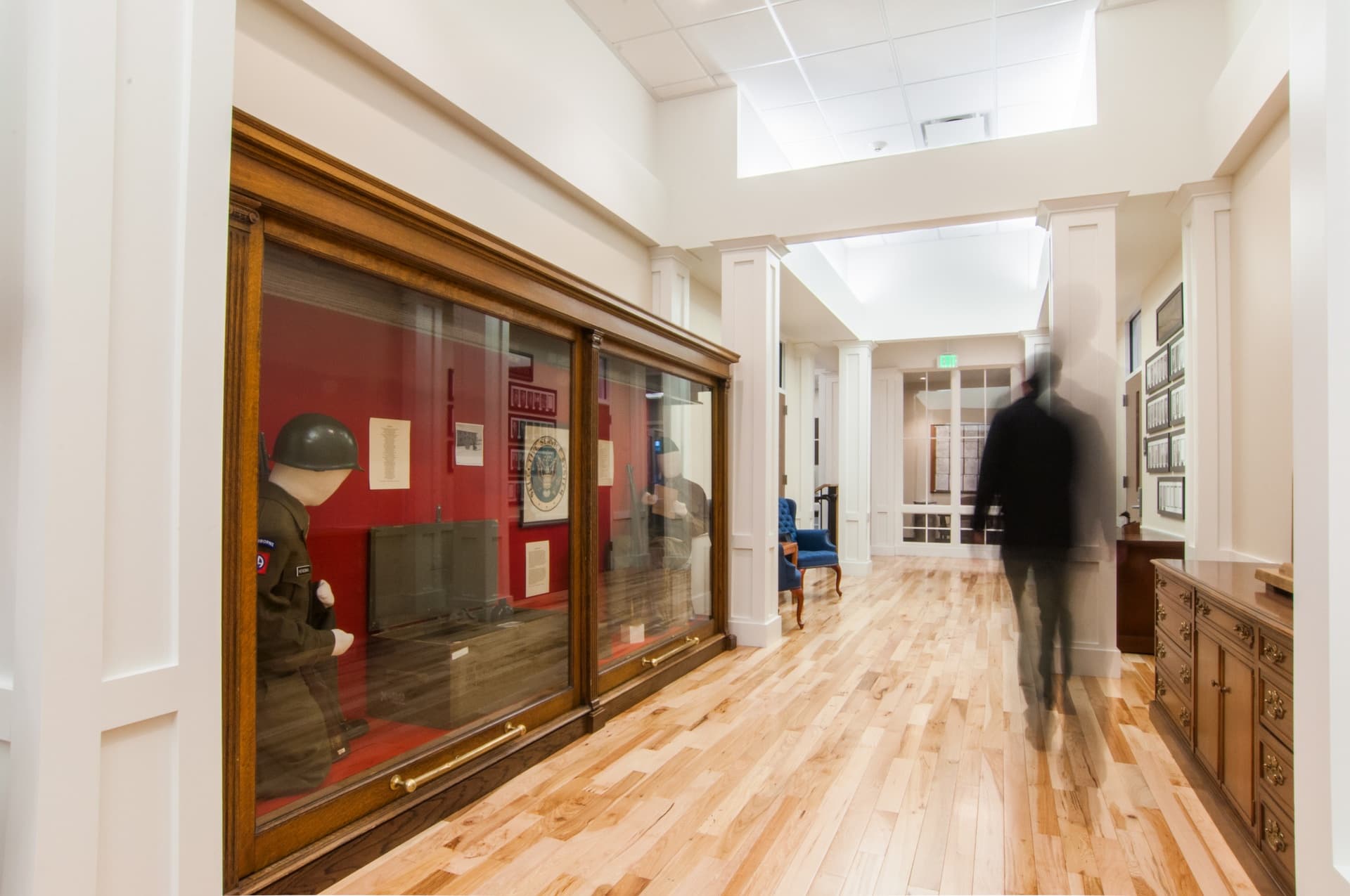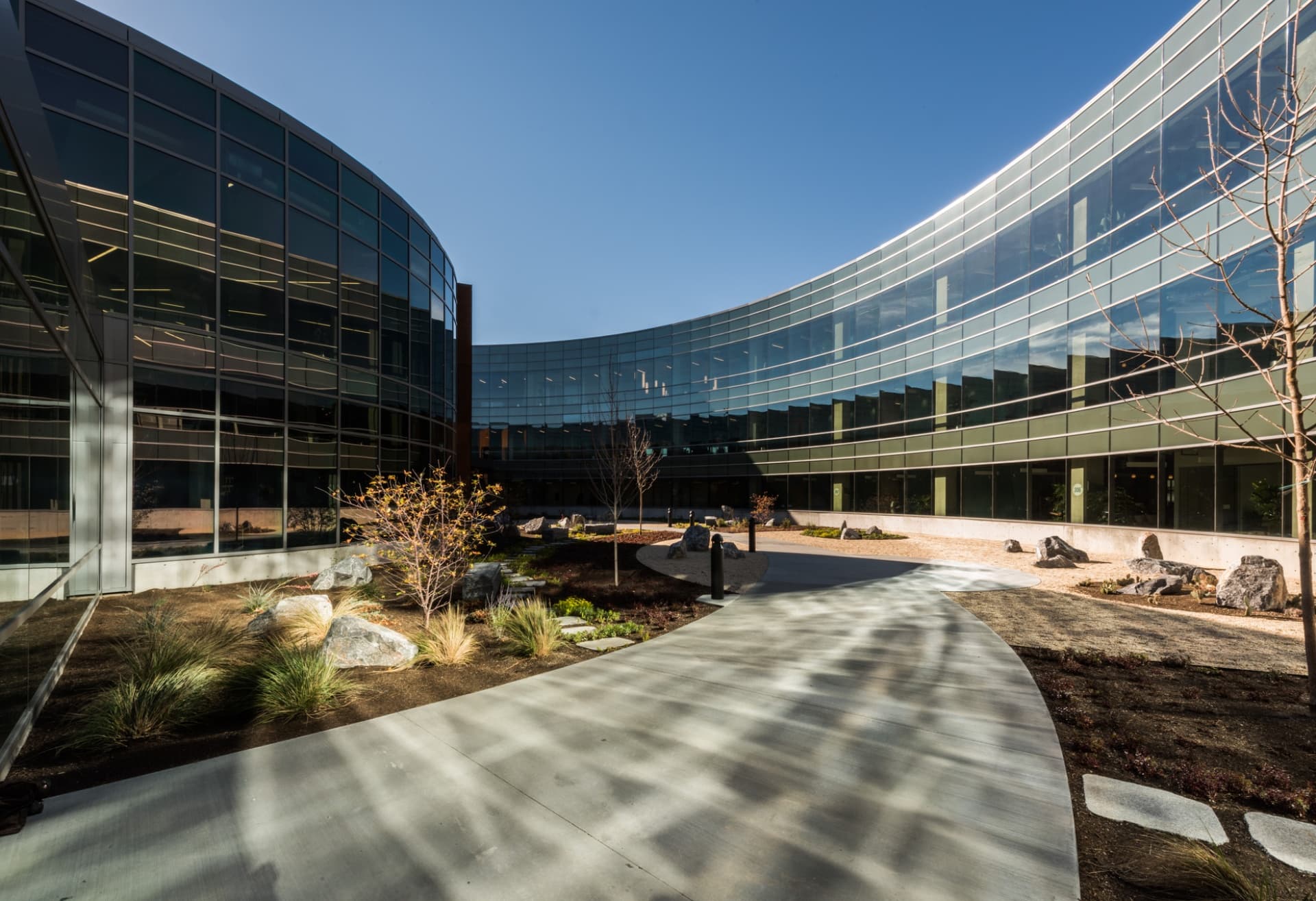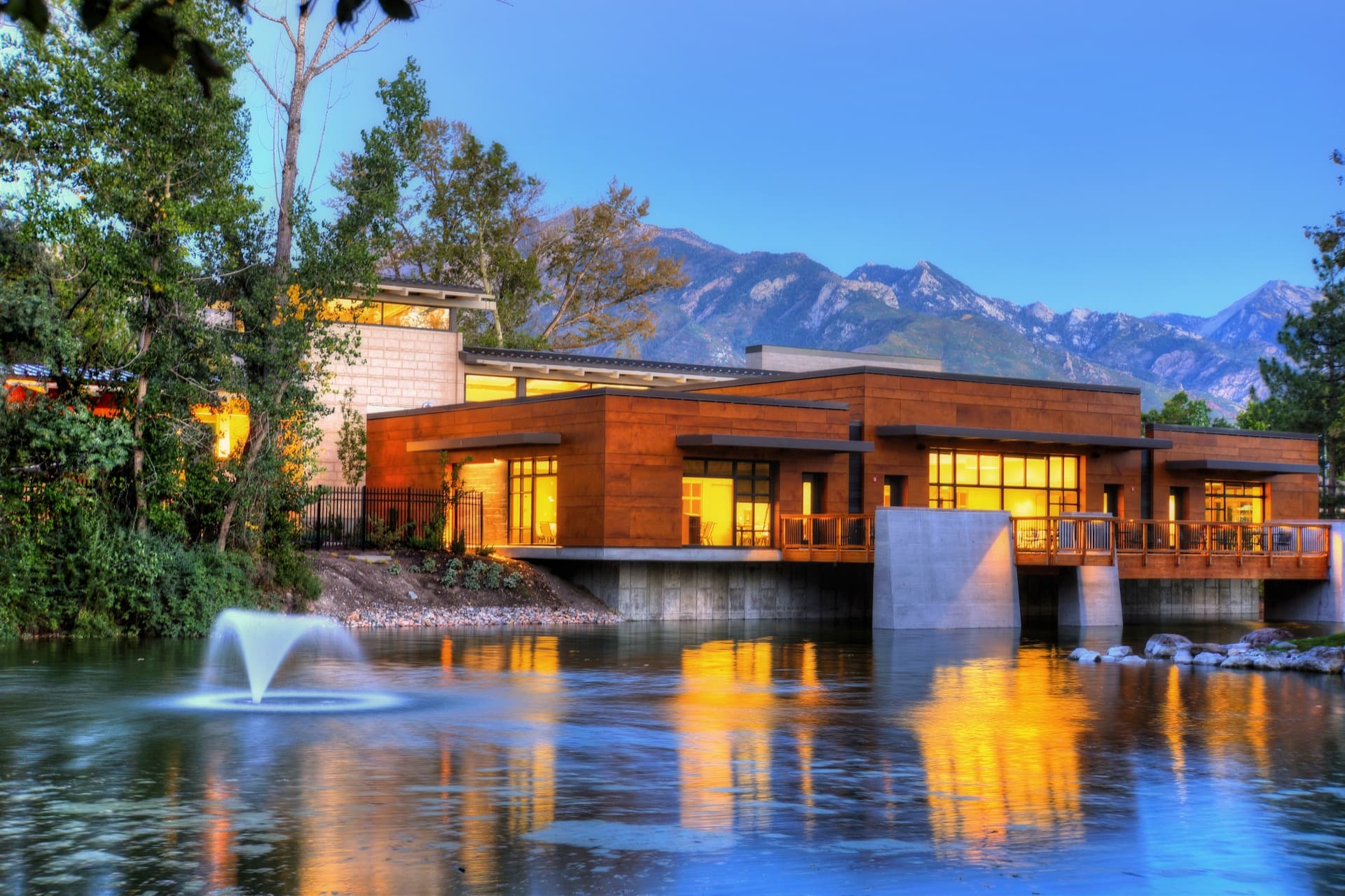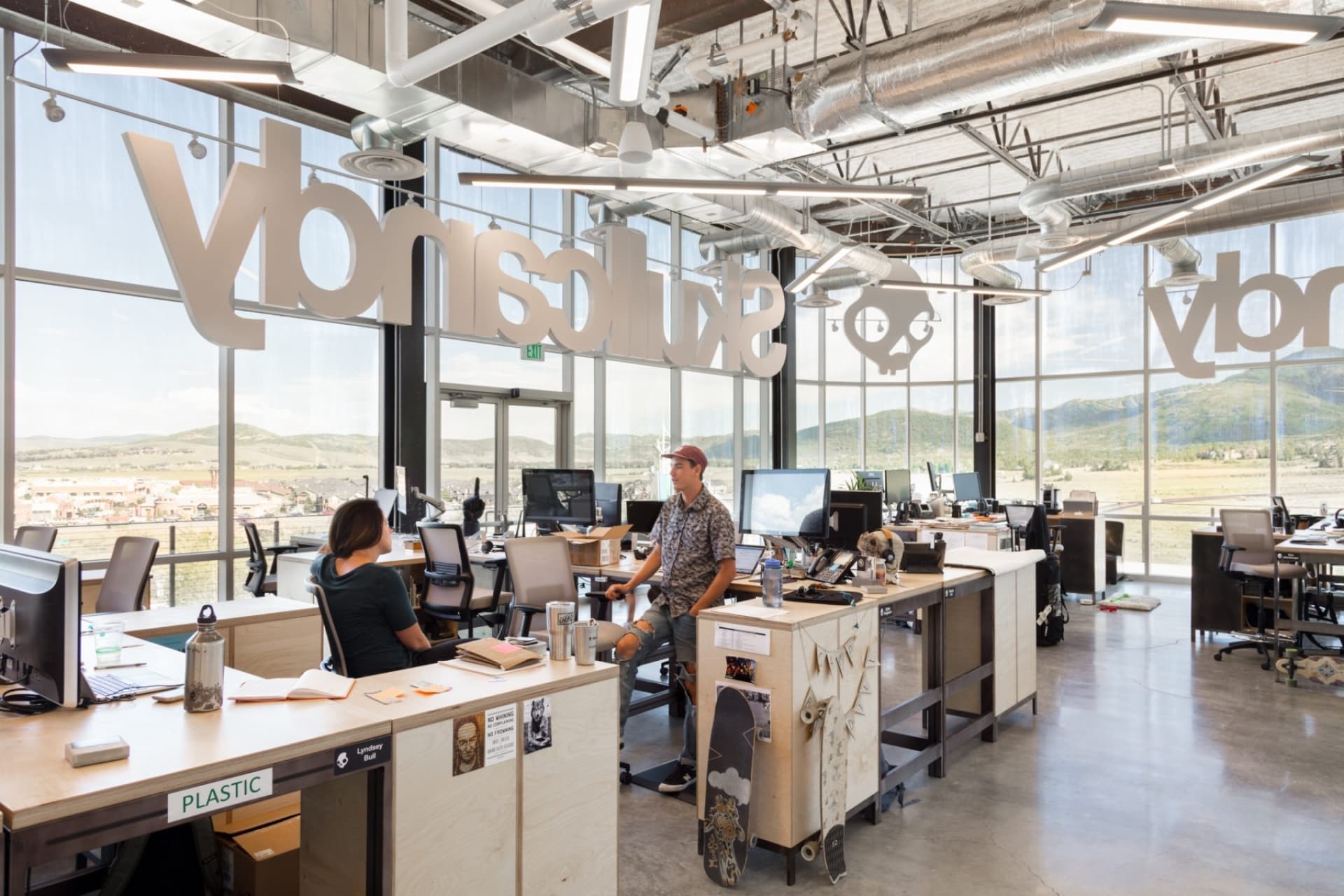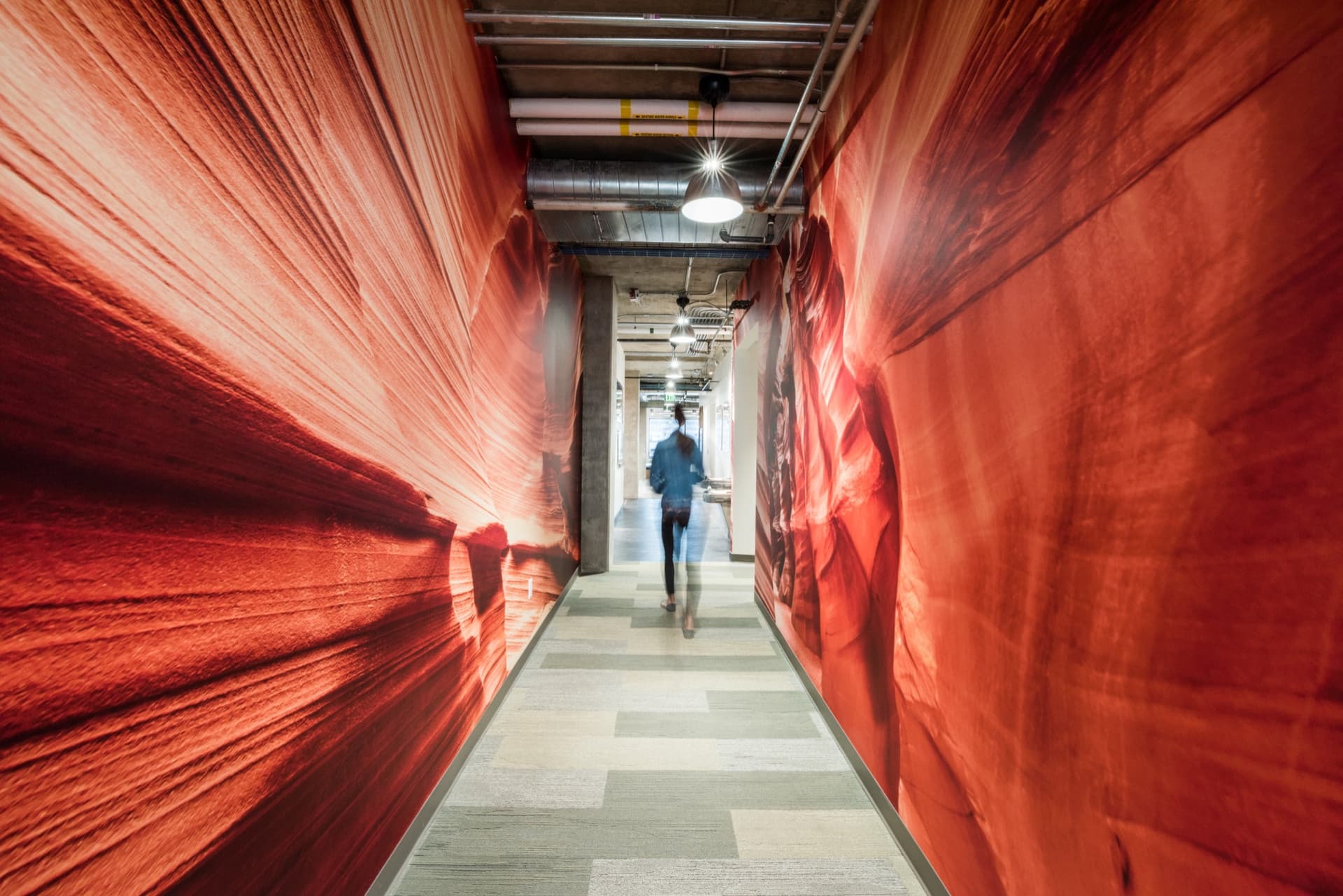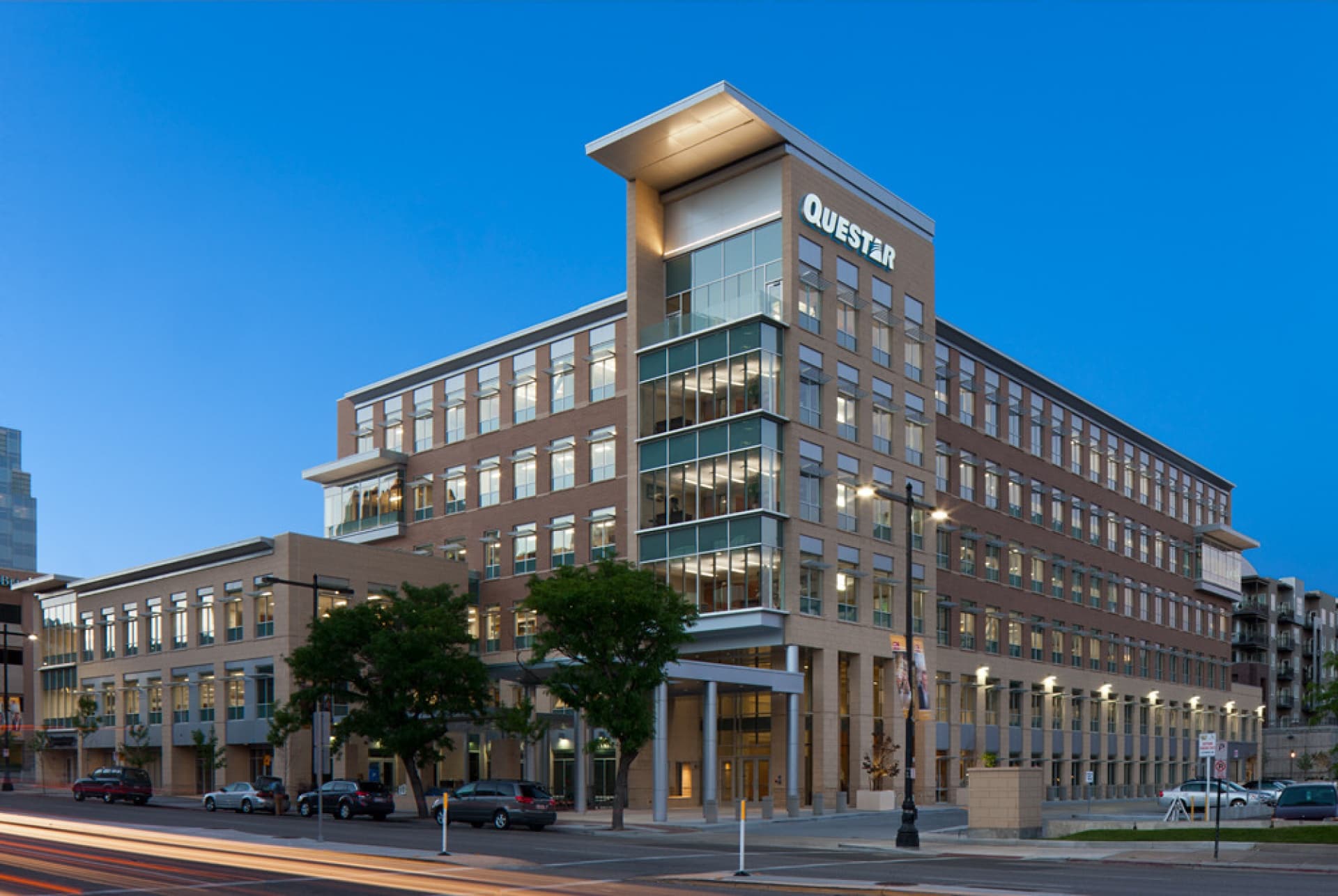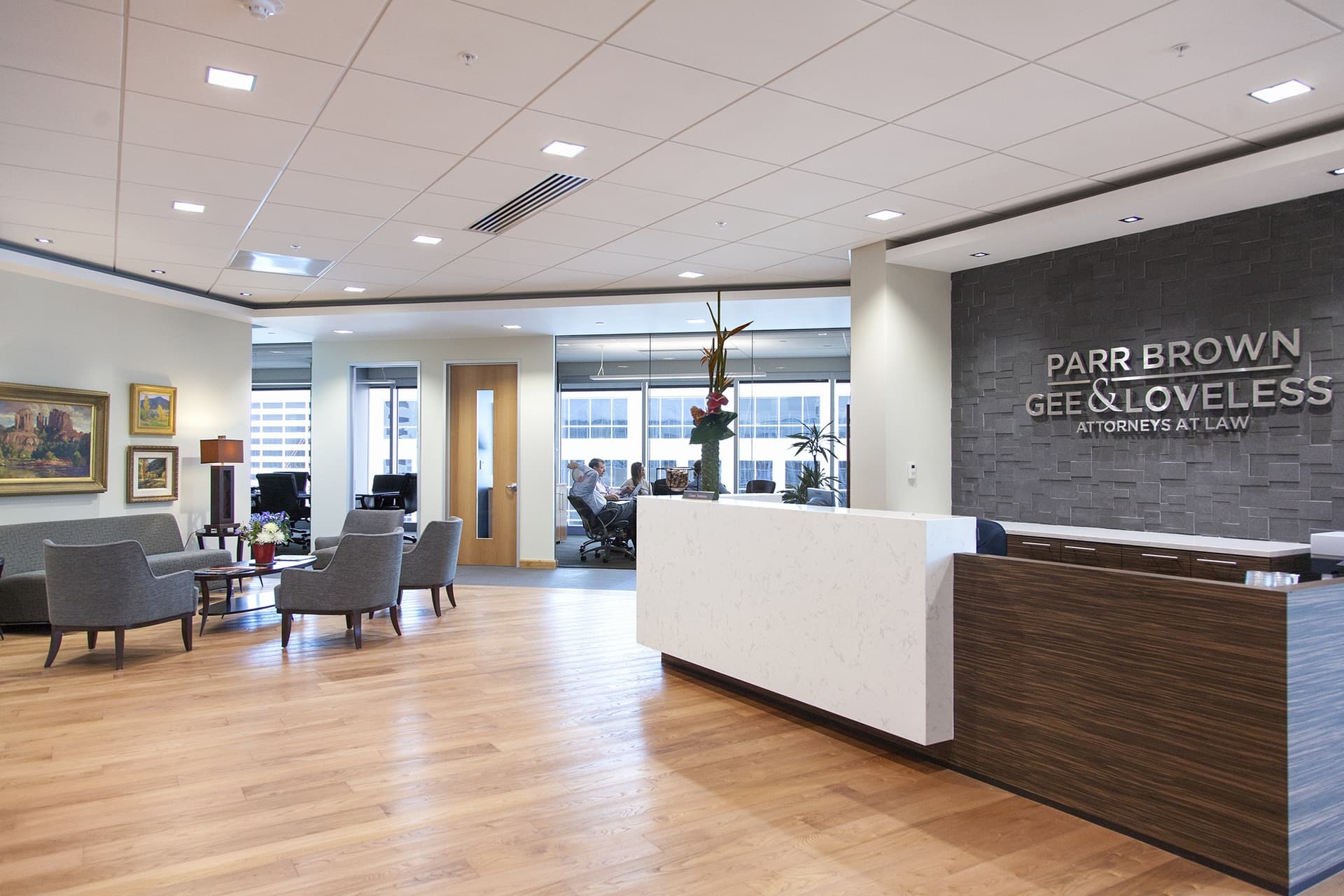LS Skaggs Applied Science Building at the Crocker Science Complex
Salt Lake City
- Catalog No.3120
- ClientUniversity of Utah
- Area140,000 SF
- Completion2025
- Awards
- 2025 Most Outstanding Higher Education Project, Utah Construction + Design Magazine
- Certifications
- Pending Certification
The LS Skaggs Applied Science Building, part of the Crocker Sciences Complex, is the new cornerstone of the University of Utah’s educational and research mission. It embodies a commitment to excellence, innovation and a bright future for the University of Utah’s academic and research pursuits. Student success is supported by a high-quality classroom experience, training in modern scientific and technological methods and a signature research experience for each major in the program. With a focus on accommodating the instructional needs of over 5,600 undergraduate and graduate students in STEM courses, the facility combines a thoughtful 40,000+ SF renovation of the historic Stewart Building with a contemporary 100,000+ SF addition.
Sweetwater County Justice Complex
Green River
- Catalog No.2574
- ClientSweetwater County
- Area55,474 SF
- Completion2018
- Awards
- 2020 AIA National Justice Facilities Review
- 2020 IIDA - Intermountain BEST - Serve
Fulfilling current and long-term County needs, we developed a Judicial Facilities Needs Assessment and a Judicial Facilities Master Development Plan for Sweetwater County. The resulting Phase I Justice Center co-locates and centralizes several public safety and justice agencies in one place, significantly improving the efficiency, convenience, safety and security of the County’s justice services while creating a distinct civic landmark.
Our design reinforces Sweetwater's community identity by drawing on the unique geology, local resources and cultural history of Southwest Wyoming. Through its locally sourced materials and native vegetation, the building embraces its context and the beauty of the Green River canyon. Bricks of different hues echo the striations of the surrounding buttes, while reused snow fence boards lend concrete walls a rustic texture. Deep reveals in the walls refer to the ongoing process of erosion found throughout the landscape. Inside the courtrooms, beetle-kill pine panels and millwork orient focus on the judge, witness stand and lectern.
Crocker Science Center at the Crocker Science Complex
Salt Lake City
- Catalog No.2566
- ClientUniversity of Utah
- Area123,500 SF
- Completion2019
- Awards
- 2018 AIA Utah Honor Award
- 2018 ACEC Grand Conceptor Award
- 2018 Preservation Utah Honor Award
- 2017 Utah Design and Construction Most Outstanding Project - Renovation/Restoration, Large
- Certifications
- LEED Silver
Located on the southwest corner of the University of Utah’s historic Presidents Circle, the Crocker Science Center is the physical gateway to the university proper. EDA worked creatively to design a sensitive adaptation and expansion of the neoclassical library (constructed in 1935) and facilitate an exciting, collaborative environment for cutting-edge knowledge creation.
Our design supports the College of Science’s new science curriculum and delivery system with an innovative project and team-based approach to science pedagogy. Visual openness, blurred lab group boundaries, shared instrumentation and diverse social settings all inspire science and technology transfer, expanding scientific expertise beyond the traditions of respective disciplines. Visual openness, blurred lab group boundaries, shared instrumentation and diverse social settings all serve to inspire science and technology transfer – expanding scientific expertise beyond the traditions of respective disciplines. All teaching laboratories in the building are highly advanced and connected to group discussion areas in order to accommodate a wide-range of teaching styles and activities.
West Valley City Police Department
West Valley City
- Catalog No.3338
- ClientWest Valley City
- Area65,741 SF
- Completion2019
Conforming to the constraints of a compact urban site with consideration to its adjacency to a large multi-modal transit hub, our design team developed a modern, ‘right-sized’ design solution to consolidate uses previously housed in multiple other locations. The Police Department expresses transparency and accountability within the community it serves, while ensuring a safe place for those working and visiting the facility.
Our application of trauma-informed, biophilic design principles includes semi-private quiet spaces for staff on each floor to decompress, have quiet conversations and receive counseling after high-stress events. “Soft” interview rooms give victims a safe, comfortable space to recount events and make statements. Careful consideration of the second and third floor workspace placement and windows maximize natural light penetration while connecting users with place and nature through views of the Wasatch Front and Oquirrh mountains.
Stacy Witbeck - Salt Lake City Operations and Training Center
Salt Lake City
- Catalog No.3163
- ClientStacy Witbeck, Inc
- Area40,800 SF
- Completion2024
- Certifications
- LEED Gold
Fulfilling the company’s need for a local office and regional corporate training center, the building program balanced the space needs between individual and collective working habits and spaces for large training and conference room settings. LEED Gold Certified, the striking L-shaped design extends to both street fronts, enlivening the pedestrian experience and setting a precedent for transit-oriented design along the rapidly growing North Temple corridor. Located adjacent to the TRAX stop that connects Utah’s two largest cities to the airport, the building encourages local employees and out-of-town staff to commute via public transportation.
Murray Science Center at Waterford School
Sandy, UT
- Catalog No.3484
- ClientWaterford School
- Area38,000 SF
- Completion2023
- Awards
- 2025 IIDA Intermountain BEST Learn - K-12
- 2024 ENR Mountain States Best Project K-12 Education
- 2023 Utah Business Magazine Green Business Awards
- 2023 Utah Design + Construction Most Outstanding Private Project Over $70 Million
Melding tradition with modernity, we balanced dedicated spaces with fundamental science education and adaptable layouts to provide a hub for scientific education, exploration and collaboration. To prepare students for the challenges of the future, we took great care in our design of specialized chemistry, biology and bio-tech, tools and nature lab spaces.
Outdoor classroom and a dedicated computer science space further the capacity to support diverse educational pursuits and hands-on learning experiences. Advancing the “Building-As-Teacher” concept, we exposed and color-coded piping in classrooms to explain fluid movement throughout the building, fostering a connection between the building and students’ learning experiences.
Miller Student Commons at Waterford School
Sandy, UT
- Catalog No.3485
- ClientWaterford School
- Area17,903 SF
- Completion2023
An inclusive space shaped by the students themselves, the Student Commons unites the entire Waterford community. As a dedicated gathering area, it fosters student expression, curiosity and stewardship by providing spaces for ownership, display and study. The multi-functional, Cross Laminated Timber (CLT) structure serves as a welcoming “front door” to the rest of the campus. Our design for the all-electric building aligns with school values to to help reduce Salt Lake Valley air pollution.
Wasatch Hills Tennis Center
Salt Lake City
- Catalog No.2642
- ClientSalt Lake City Corporation
- Area4,200 SF
- Completion2024
- Certifications
- LEED Certified
Overcoming budget challenges brought about by limited grant funding, we defined critical program needs to develop a cost-effective design. Our continuous evaluation resulted in innovative solutions without sacrificing the project's vision of providing improved accessibility to the courts, changing and shower facilities while providing space for merchandise and a pro shop.
Justice Court Renovation
West Valley City
- Catalog No.2987
- ClientWest Valley City
- Area20,600 SF
- Completion2023
Harmonizing security with public access, the renovation design reimagines the space. We developed dignified spaces for the public with ‘soft’ interview rooms to reduce the trauma for certain people testifying. Acknowledging the courts system is a stressful place we incorporated several biophilic design strategies to reduce occupant stress-levels, improve the sense of well-being and passively improve staff’s ability to maintain a high degree of safety and security. Strategies to accomplish this include maintaining visual site lines throughout allowing staff to readily observe all areas within the facility, Our utilization of natural materials such as wood, stone and even plants throughout the space to re-enforce a connection between the occupants and nature. Everywhere possible we invited natural daylight into spaces within the facility. Our design enabled the opening of exterior walls to invite daylight into offices, cubicles and public spaces, including introducing diffused natural daylight into the courtrooms. We also provided the opportunity for justice among those within the community without internet access by carving out space for two sound-isolated virtual hearing booths in the main lobby.
Henry Eyring Building Chemistry Building Renovation
Salt Lake City
- Catalog No.2827
- ClientUniversity of Utah
- Area92,000 SF
- CompletionOngoing
The extensive 92,000-square-foot North Tower of the Henry Eyring Chemistry Building (HEB) renovation is unfolding in a carefully planned sequence of nine phases. Transforming HEB into a cutting-edge facility for teaching and chemistry research lab began with our leading a comprehensive facility master plan that meticulously assessed the capacities of the existing architectural, structural, mechanical and electrical infrastructure, The master plan documented the existing conditions and capacities while outlining recommended time frames through a proposed sequencing of design and construction phases and a map detailing the relocation of existing occupants to facilitate the execution of each phase. Our phased design and construction approach ensures that the facility can continue to operate smoothly during the renovation process with minimal disruptions to ongoing activities and services.
IMA Financial Group
Salt Lake City
- Catalog No.3221
- ClientIMA Financial Group
- Area29,400
- Completion2023
Driven by an imperative to reinvigorate the appeal of a physical workspace, we worked closely with IMA to develop innovative solutions to embody its culture of collaboration within the space. The design achieves this by connecting the office space physically and visually; seamlessly weaving central gathering areas with adaptable workspaces tailored to the needs of in-person, remote and hybrid employees. Our team augmented the appeal of the contemporary space with exposed structure ceilings, wood elements, abundant daylighting, city and mountain views and carefully selected furniture and art.
Maschoff Brennan - 95 South State
Salt Lake City
- Catalog No.3412
- ClientMaschoff Brennan
- Area12400
- Completion2024
Supporting daily operations while anticipating long-term growth, EDA’s design reimagines the law office as a collaborative, hybrid-ready workplace. Our design provides the firm flexible work zones paired with central gathering areas to encourage connection, mentorship and teamwork while accommodating evolving work styles. Exposed ceilings and wood detailing add warmth and character, complemented by natural light and sweeping city and mountain views. Carefully curated furnishings, finishes and artwork enhance both functionality and brand expression. The result is a sophisticated, efficient environment suited for the prestige of a modern law firm.
Google Fiber - Mesa
Mesa
- Catalog No.3410
- ClientGoogle Fiber
- Area9,100 SF
- Completion2024
Balancing functional, technological and corporate requirements with the unique character and culture of the Mesa region. The use of breeze block, desert-inspired color palettes and textures alongside nods to Frank Lloyd Wright’s regional architectural influence ground the space in its Arizona context. Unique signage and artwork contribute to the space’s vibrant and welcoming atmosphere, including our collaboration with a local artist to create a custom, large-scale desert scene mural. The space itself supports the daily operations of Google Fiber's Mesa team while accommodating visiting executives and board members with flexible meeting areas and executive-level amenities.
Google Fiber - Salt Lake City
Salt Lake City
- Catalog No.3068
- ClientGoogle Fiber, Inc.
- Area13,548 SF
- Completion2022
Our design team transformed an aging industrial warehouse into a bright, welcoming and highly functional workspace for Google Fiber’s Salt Lake City offices. Working alongside Google Fiber from ideation to implementation, the space’s flexible work environments allow employees to choose how and where they work best — with options from heads-down work areas to several spaces for collaborative group work. Our design celebrates the building’s unique industrial character and history throughout with elements such as exposed trusses, beams and ducting as well as using a decommissioned ceiling crane and salvaged metal door serve as eye-catching accent pieces.
AES Clean Energy
Salt Lake City
- Catalog No.2697
- ClientAES Clean Energy
- Area31,885
- Completion2023
Applying a budget-conscious design strategy, we completely transformed the decades-old corporate office space. To accomplish the transformation, we minimized structural or mechanical changes while focusing on upscale finishes and energy upgrades. Program elements include a 24-hour control room, gathering spaces for meetings and collaboration and office spaces equipped for remote and in-person work.
Saprea
Lehi
- Catalog No.2678
- ClientYounique Foundation
- Area66,564 SF
- Completion2020
The design focused on providing a healing environment that inspires hope and creates a positive impact through education, advocacy and social awareness. Our programming enhances the user experience with yoga studios, presentation spaces, photo and video studios, podcast rooms, a library and therapy rooms. We maximized natural light upon entry into the two-story atrium for a bright, welcoming atmosphere and incorporated custom white oak ceilings provide warmth, uniformity and a visual sense of place throughout the common areas.
Leavitt Equity Partners
Salt Lake City
- Catalog No.3198
- ClientLeavitt Equity Partners
- Area4,343 SF
- Completion2022
Providing a unified, collaborative office environment our design balances contemporary aesthetics with a timeless, professional feel. The carefully curated space reflects the firm’s distinguished identity while fostering functionality and comfort. Our blend of modern workplace strategies with high-end design details resulted in a office that enhances day-to-day operations while reinforcing Leavitt Equity Partners’ commitment to professionalism, innovation, and employee well-being.
Snell & Wilmer - Gateway Tower West
Salt Lake City
- Catalog No.3225
- ClientSnell & Wilmer
- Area43,386
- Completion2024
EDA’s long-standing relationship with Snell & Wilmer began with designing its original space over 15 years ago. Having implemented multiple modifications over the years, we recently updated its space entirely. Typical of our approach, we applied current workspace to provide the law firm's downtown Salt Lake City office efficient, flexible layouts that integrate technology and support hybrid workstyles.
MGIS - 95 South State
Salt Lake City
- Catalog No.3413
- ClientMGIS
- Area9,745
- Completion2024
EDA's sophisticated design balances quality and functionality to meet all programmatic requirements while reflecting the client’s professional identity. Glass-fronted offices and meeting rooms promote openness and connectivity, complemented by modern finishes, warm wood ceilings and carefully integrated lighting. The refined palette and streamlined details reinforces MGIS’s reputation with an elegant, efficient, high-performance workplace.
Sarcos Laboratory
Salt Lake City
- Catalog No.2695
- ClientSarcos Technology and Robotics
- Area60,000 SF
- Completion2021
Our team worked with this global leader in robotic systems to develop a new headquarters and production facility in a 100-year-old steel and iron foundry space in Salt Lake City’s Granary District. Our design expanded Sarcos' prototyping capabilities while simultaneously fulfilling its objective of attracting and retaining top-tier talent.
City Center I
Salt Lake City
- Catalog No.2654
- ClientUnico Properties
- Area33,000 SF
- Completion2021
Working with the client to reintroduce the existing building as an integral and welcoming part of downtown, the reimagined public space provides a top-tier tenant experience with amenities more akin to hospitality than a typical commercial environment. Utilizing the existing structure and capitalizing on unused space, our design incorporates modern forms, a natural color palate and natural wood screening elements that soften – without detracting from – the purposefully exposed concrete. Our design includes a new, multi-functional courtyard with fire pit, seating options and dramatic wall mural and a re-energized fourth-floor balcony.
Keystone National Group
Salt Lake City
- Catalog No.2643
- ClientKeystone National Group
- Area8,861 SF
- Completion2020
The design solutions reimagines the top two floors of the World Trade Center Utah building into a professional, sophisticated office environment. Our meticulous space planning optimized available space to ensure comfort and functionality with sufficient natural light in perimeter offices and enhanced visual appeal using varied material palettes. Glass office fronts and stair railings were used extensively to maximize natural light flow into interior spaces. The upper floor's high volume was leveraged with tall ceilings and structural steel framing, adding industrial sophistication while incorporating wood slat ceilings to screen HVAC systems. Providing a vaulted roof structure filled with HVAC and elevator equipment allowed us to transform the central mechanical spaces into connecting hallways.
Canopy Tax
Lehi
- Catalog No.2583
- ClientCanopy Tax
- Area88,876 SF
- Completion2019
- Awards
- 2020 IIDA - Intermountain BEST on a Budget
Canopy Tax is a collaborative open office with a multitude of breakout spaces and phenomenal valley views. The spacious main areas allow teams to meet in private or bounce ideas off other team members they happen to run into.
Weave Headquarters
Lehi
- Catalog No.2521
- ClientWeave
- Area40,480 SF
- Completion2018
A leading developer of dental office software, the Weave Headquarters space serves as a recruiting tool to attract quality employees and talented young leaders with a creative, collaborative and exciting space. Meeting the constraints of a tight, “turnkey,” building owner driven budget, our design provides secure work areas within an open, energetic environment. Amenities include a Swag Store, Zen Den, Library and an employee Hair Salon. Our central stair design and orientation creates a focal point and is a significant conduit connecting the company’s amenity spaces with the upper-floor team members.
Tata Chemicals
Sandy
- Catalog No.2578
- ClientTata Chemicals
- Area9,933 SF
- Completion2018
As part of a cross-country move from New Jersey to Sandy Utah, resulting a relocation of most its employees, Tata Chemicals’ concerns included providing employees an office space where they enjoyed working. EDA delivered such a space with our sophisticated, transparent and collaborative office design. Our strategic use of glazing achieves a feeling of openness and transparency throughout provides a connection to the outside while accommodating privacy and functional requirements. Encouraging collaboration and company socialization, an open break room with custom benching promotes informal meetings. Additional meeting spaces throughout the open office further encourage employee engagement and collaboration. Connecting the spaces to Tata’s mining of the mineral Trona, elements and images representing Tata Chemical’s mining heritage serve as subtle and obvious ways to reinforce the culture, brand and distinct history.
Piper Sandler - 95 South State
Salt Lake City
- Catalog No.3347
- ClientPiper Sandler
- Area3,620
- Completion2023
We adapted the national financial services firm's established design guidelines to resonate with the local Utah market while maintaining brand consistency. Working closely with Piper Sandler's national real estate team, we developed a design prioritizing community and collaboration. Our solution strategically oriented breakroom spaces to capture prime views of the Utah State Capitol building. These thoughtfully positioned gathering areas transform daily interactions into inspiring moments against Salt Lake City's iconic skyline.
Quotient
Salt Lake City
- Catalog No.2693
- ClientQuotient Technology Inc.
- Area25,195 SF
- Completion2022
Elevating function and quality, the space is next-generation workplace experience uniquely tailored to Quotient. Our human-centered solution incorporates various space typologies to suit work-style preferences such as zoom rooms, one-on-one/huddle rooms, heads-down workspace, open collaboration areas and dedicated hoteling space for remote and travelling staff. Our unique branding deconstructs Quotient’s logo along the reception wall through scale, proportion and geometry and a mixed materiality of moss, wood and blackened steel.
Confidential Software Firm
Lehi
- Catalog No.2621
- ClientConfidential
- Area13,103 SF
- Completion2020
- Awards
- 2020 IIDA - Intermountain BEST under 15,000 SF
We developed a space for this international software and technology firm with an open floor plan for mobility and flexibility to accommodate work style and location based on task. Our team incorporated local user input and applied evidence-based design strategies to determine the quantity and types of spaces, such as private ‘zone’ rooms, group ‘focus’ rooms, ‘project team’ rooms and multi-purpose spaces able to support the needs of research/ engineering and sales teams. Our sustainable and environmentally conscious design features natural, rapidly renewable materials, local materials and materials with recycled content. Work spaces along window lines provide natural daylight and an outdoors connection.
Lucid Software Headquarters
South Jordan
- Catalog No.2447
- ClientLucid Software
- Area85,080 SF
- Completion2017
- Awards
- 2018 IIDA - Intermountain Merit Award - BEST on a Budget
Accommodating exponential growth since its 2010 inception, we worked with Lucid Software on a corporate headquarters that locates employees from various sites into one central space. The office unifies employees around amenities and resources includes specifically to promote a fun and collaborative work environment. Our design solution reinforces Lucid’s culture and serves to recruit talent throughout the Salt Lake region in an increasingly competitive hiring environment.
Dyno Nobel
Cottonwood Heights
- Catalog No.2975
- ClientDyno Nobel
- Area48,817 SF
- Completion2020
Combining departments previously housed in separate buildings/suites into one cohesive space, the space design amplifies the company's culture and mission. We worked with Dyno Nobel to amplify the company's culture and mission as part of adding dimension and a feel of movement to the two-story space.
Castlight Health Customer Center of Excellence
Sandy
- Catalog No.2957
- ClientCastlight Health
- Area23,300 SF
- Completion2020
The new Customer Center of Excellence facility provides a workspace for the employees of the San Francisco-based firm who relocated to the Salt Lake City area from around the country. The modern, welcoming and inviting environment incorporates a neutral, nature-based color palette and elements of Castlight’s brand and culture. Corporate functions within the space include customer service/call center space along with collaboration, computer engineering, staff training areas and an ‘all hands’ meeting area between two of the staff training areas. We mitigated the impact of sound travel between the different uses through strategic space planning, with buffers between the different uses and the application of acoustic solutions as part of the ceiling treatments, fabrics specified and furnishings. The "all hands" area connects to the training rooms thorough a garage door at one side and a movable partition wall at the other.
Confidential Technology Firm
Salt Lake City
- Catalog No.2668
- ClientConfidential
- Area13,247 SF
- Completion2020
Based in San Francisco, this rapidly growing technology firm chose to open its Salt Lake City office in the historic Kearns building in downtown Salt Lake City. EDA’s neutral and warm design preserves the historical, industrial design elements and capitalizes on excellent mountain views throughout the space (viewed through original wood window frames). Our design includes a 2,000 SF mezzanine addition to satisfy the firm's growth plans and technology upgrades throughout to accommodate the firm’s extensive teleconferencing needs.
Social Hall Lobby / Elevator Corridor Remodel
Salt Lake City
- Catalog No.2626
- ClientCity Creek Reserve
- Area1,590 SF
- Completion2020
As part of the strategy to increase the marketability of the downtown Salt Lake City multi-tenant building, the reimagined the entry and elevator lobbies provides a well-lit fresh modern feel. Our design allows the subtle difference between the white walls and light wood to help brighten the lobby and elevator cab spaces. We contrasted the light colors, adding a display of green moss to form a bold stripe alongside wall lights and wood paneling.
Wasatch County Administrative Building
Heber, UT
- Catalog No.3482
- ClientWasatch County
- Area62,000 SF
Currently in design, Wasatch County’s new Administration Building brings departments and the public together in a civic space rooted in clarity, sustainability and connection. The purpose-built facility consolidates County services and the Council Chambers with intuitive wayfinding and thoughtful adjacencies that streamline public access while supporting staff collaboration. Warm materials, natural light and distinct circulation paths elevate the visitor experience. Designed to meet the AIA 2030 Challenge, the building features a Mass Timber structure, high-performance envelope and energy-efficient ground source heat pump system -- a future-ready design that reflects Wasatch County’s commitment to service and stewardship.
Wasatch County Courts Expansion
Heber
- Catalog No.3427
- ClientWasatch County
- Area29,700 SF
- Completion2026
We are leading the process for County and State entities to be housed within a new facility. As part of developing a the design for an addition and remodeled space that considers the work style of each entity, we invested the time needed to engage and listen to each department and communicate our design in an easy to understand manner.
Lassonde Studios
Salt Lake City
- Catalog No.2353
- ClientDavid Eccles School Of Business, University Of Utah
- Area161,000 SF
- Completion2016
- Awards
- 2019 ASID Outcome of Design Award
- 2018 ACUI Facility Design Award
- 2017 IIDA - Intermountain BEST – Learn
- 2017 SXSWedu Learn X Design Awards
- Certifications
- LEED Gold
EDA collaborated with Cannon Design to design a nationally-acclaimed transformational, educational live-work experience for student entrepreneurs, innovators and creators at the University of Utah. The LEED Gold design expresses and encourages the live-work entrepreneurial spirit through solutions such as the 20,000 SF Neeleman Hangar innovation space on the ground floor, 15,000 SF of garage-style “maker” spaces on all five levels and a variety of housing options for its 400 student residents. The solution, inspired by the turn-of-the-century converted industrial spaces, includes a building’s flexible grid system allows the University to reconfigure rooms and expand the innovation hangar as students’ needs change. The space enables entrepreneurship, facilitating connection between students of different disciplines to collaborate on products and companies throughout their residence.
Beverley Taylor Sorenson Arts and Education Complex
Salt Lake City
- Catalog No.2184
- ClientUniversity of Utah
- Area115,000 SF
- Completion2014
- Awards
- 2014 AIA Utah Honor Award
- 2014 ENR Mountain States Best Higher Education Project
- Certifications
- LEED Silver
The state-of-the-art teaching facility houses the University of Utah’s College of Education, the Tanner Dance Program and College of Fine Arts. Additionally it features a new collaborative research area and new faculty and administrative offices for the College of Education. The space promotes cross-disciplinary collaboration through a well-conceived dynamic framework for bringing people together in a vibrant and inspiring setting. A single circulation spine connects the building’s entrances and public gathering areas, resulting in an internal "street" supporting meeting, socializing, dining and studying. Transparent to both indoor and outdoor activities, the street’s walls expose a vibrant culture of shared community.
The design was informed by the University’s Climate Action Plan and – through careful planning and design -- achieves over 40 percent savings on energy usage over typical facilities of its kind. Alongside classrooms and offices, the facility's spaces include rehearsal studios, rehearsal/performance space, visual arts studios, costume design and fabrication shop, technology-supported classroom spaces and large multipurpose/lecture space.
Spec Office Building Study
Lehi
- Catalog No.2907
- ClientConfidential
- Area186,000 SF
- Completion2020
This core-and-shell office building design capitalized on our long history corporate space and architectural design. We provided the developer high-quality office space, ample flexibility to future tenants and an adaptable floor plate and core designed to balance occupant comfort with energy efficiency. The optimized the glass-to-core dimension maximize natural daylighting, including locating the fitness center on the building’s exterior instead burying it in middle to create an amenity tenants would enjoy using. The highly efficient core layout allowed us to create a generous 2-story entry lobby to elevate the first impression for all who enter.
Summit County Health Services
Park City
- Catalog No.1192
- ClientSummit County
- Area25,000 SF
- Completion2007
We approached the design with the philosophy that those working to promote community health should experience a healthy work environment themselves. Our “healthy building” maximizes natural daylight in working spaces while ensuring energy efficiency through passive solar orientation, draft-resistant construction and a geothermal heat pump. The "100 Mile Building" is built from locally sourced materials such as Browns Canyon stone, local Zinc panels and local timber. The Center houses the County Health Department and provides space for the People’s Health Clinic - a non-profit organization that offers basic health services to uninsured residents.
L.S. Peery Environmental Education Building
Ogden
- Catalog No.0971
- ClientOgden Nature Center
- Area7,000
- Completion2006
- Awards
- 2008 AIA Utah Honor Award
- 2008 AIA Utah Sustainability Award
Accommodating over 20,000 visitors a year, the Education Center supports the environmental education mission and programs of the Nature Center. Its purpose is to serve as a gateway to the nature preserve and a tool to expand awareness of possibilities related to a more sustainable relationship between the built and natural environment. The building serves as a “teacher.” It incorporates a variety of environmentally sustainable materials and systems, interpreted through a range of passive and interactive exhibits. Special features include straw-bale/earthen plaster walls, salvage lumber, displacement evaporative cooling, radiant flooring, heat chimney and natural/adaptive artificial lighting. One hundred percent of the building’s energy is supplied by roof-mounted photovoltaics. Based on our site analysis, the building and fenestration orientation allows for the collection of solar energy. Shielded from the sun during the summer, the building captures beneficial breezes and protects the courtyard areas from the canyon winds emerging from the east. Spaces developed for the facility include a foyer with an interpretive gallery, classrooms for environmental study, six offices for teachers / naturalists, gift and book shop, meeting spaces and a volunteer room with an adjacent volunteer coordinator’s office. The central two-story gallery space is flanked by lean-to wings are sheltered by planted roots.
Herriman Library
Herriman, UT
- Catalog No.1672
- ClientSalt Lake County
- Area20,302 SF
- Completion2010
- Certifications
- LEED Gold
Designed with people of all ages and interests in mind, we applied age-specific strategies for children (low shelving with engaging end-cap activities) and teens (unique seating to facilitate fun gatherings). Recognizing the way we read and access information is changing, we developed a flexible design, providing the community an asset for digital information connectivity and multi-media creativity. Augmenting daily library programming the multipurpose room with separate entrance allows after-hours community uses.
The building's form and orientation adhere to design concepts developed to minimize energy usage and promote the use of natural daylighting techniques. When it opened, the LEED Gold Library boasted the lowest Energy Use Index (EUI) of the hundreds of buildings in Salt Lake County’s repertoire. EDA utilized an extensive process for building envelope optimization that included energy and daylight modeling to inform the size and placement of openings to achieve both high performance and high-quality daylighting and views. The facility is part of a larger area that includes a recreation center (also designed by EDA) and the City Hall. Its positioning works with the surrounding environment to make an inspiring civic campus.
Draper Senior Center
Draper
- Catalog No.1953
- ClientSalt Lake County
- Area21,890 SF
- Completion2012
- Certifications
- LEED Gold
Drawing inspiration from modern hospitality the open, light-filled design creates an welcoming and active environment to meet the needs of a new generation of seniors. Generous usage of windows and skylights spread natural light throughout the building, while the inclusion of South Willow Creek, redirected to form a picturesque pond, enhances the site's natural charm. A LEED Gold certified building, the Draper Senior Center is not only environmentally conscious but strategically situated alongside the Draper Library and the TRAX light rail system. Its massing is thoughtfully orchestrated to harmonize with the surrounding context, ensuring that its scale complements neighboring structures despite its larger footprint.
Utah Cultural Celebration Center
West Valley City
- Catalog No.2265
- ClientWest Valley City
- Area28,000 SF
- Completion2017
The two-level expansion and renovation serves the multi-cultural needs of groups throughout its community and features an archival quality storage space that meets the requirements of Smithsonian Art Museum traveling exhibits. Our design accommodates the City’s desired programming needs to host performing art shows, K-12 arts education programs conferences and concert as well as conventions, trade shows and food festivals.
Weber County Library North Branch
Ogden
- Catalog No.2567
- ClientWeber County Library System
- Area21,625 SF
- Completion2019
Following a successful bond campaign, our process to identify opportunities for improvements involved a a rigorous evaluation of systems and resources. Our process included engaging in collaborative community and user input to uncover everyday users needs to arrive at consensus between the County and the City of North Ogden. The resulting solution doubled the library's program space while providing an updated front entry and new rear entry and façade.
The new spaces within opens up to and welcomes constituents into a an entirely refreshed and modern presence.
Weber County Main Library Historic Restoration
Ogden
- Catalog No.2135
- ClientWeber County Library System
- Area55,680 SF
- Completion2019
- Awards
- 2019 Library Journal Magazine New Landmark Libraries - Honorable Mention
- 2019 Preservation Utah Heritage Award
Seamlessly marrying the contrasting needs of a library in the digital age and the preservation of a gem of mid-century modernist architecture, this transformation updated the library while positioning it for inclusion on the National Register of Historic Places. Recognizing its architectural and community significance, we engaged extensively with Ogden's residents, leaders and library staff throughout the design process. The resulting design led to a thirty percent increase in publicly accessible spaces and modern technology and building systems. The dual-focused the design efforts developed a facility that functions as a repository of books and provides community access to multi-media resources.
In addition to the traditional book stacks and reading areas, the renovated library features interdisciplinary spaces to house dedicated science, technology, engineering, arts and math (STEAM) education-focused spaces. Developed due to needs expressed by the client and community, these community spaces include maker spaces for functions such as film making, general arts studio and small theaters to accommodate readings and music recitals and performances.
As part of preserving the historical integrity, all the original walnut paneling was preserved; most of which was protected in place and carefully refinished. The special collections room in the basement, outfitted with rose wood paneling, was protected through abatement, demolition and new construction phases. The design introduced a new plaza connecting the library to its natural surroundings and incorporated contextually sensitive architectural elements such as new entries and windows to foster community engagement.
Fourth District Courts and City Police Facility
Spanish Fork
- Catalog No.1480
- ClientSpanish Fork City
- Area60,182 SF
- Completion2009
- Awards
- 2008 AIA National Justice Facilities Review
The contemporary design draws on traditional architectural organization with a focus on reflecting Spanish Fork’s strong rural traditions and identity while telling the story of the area’s local masonry tradition. The two-wing solution provides separation between courts and justice functions and the police, each with a separate entrance, while anticipating future expansion needs. To inform the program and design we applied an inclusive, consensus-building and creative problem solving approach to lead the interface between the City, Police Department, Administrative Offices of the Court and Utah County Sheriff’s Department. Siting the building we integrated CPTED (crime prevention through environmental design) and building security criteria with urban planning and design considerations to promote walkability, transit connection and public place-making.
Farmington City Hall
Farmington
- Catalog No.1676
- ClientFarmington City
- Area21,267 SF
- Completion2010
- Awards
- 2010 Mountain States Construction Gold Award - Intermountain Best
We engaged the community to develop a city hall that - rather than having a modern design - reflects the unique culture and heritage of the City's historic core and Main Street. Our solution provides a contextual design response, embodying the character of the surrounding Farmington neighborhood. To scale down the overall building mass, the facility is comprised of four discrete building wings joined by a transparent atrium. Three of the wings invoke the historic frame homes along Main Street, while the fourth and principal wing is a reference to Farmington’s original red-brick city hall. Material choices and design reference Farmington’s heritage and historic architecture without being overly representational or literal. Three of the wings utilize pitched roofs, clapboard wood siding and wood windows to reflect the historic frame homes along Farmington’s Main Street. The brick-clad fourth and principal wing, evokes Farmington’s existing original brick city hall. Other materials on this portion of the building include red sandstone and gneiss granite quarried locally. The difference in materials also serve as wayfinding prompts. The glass atrium denotes the public entrance and lobby with pre-function spaces and connection to City departments, whose offices and support spaces are housed within the white wings. The principal wing’s brick points the way to the city council chambers and community room.
Third District Civil Court Room Remodel
Park City
- Catalog No.2216
- ClientSummit County
- Area22,000 SF
- Completion2014
Providing the State Courts space within the existing court facility led to the development of a third courtroom without the need for an addition on to the existing facility. The streamlined civil courtroom space was provided by digitizing active and inactive records and remodeling the associated high density filing rooms and clerical area.
LS Skaggs Pharmacy Institute
Salt Lake City, UT
- Catalog No.1951
- ClientUniversity of Utah
- Area149,715 SF
- Completion2012
- Awards
- 2013 AIA Utah COTE Award
- 2013 AIA Utah Merit Award
- Certifications
- LEED Gold
Sited at the gateway to the University of Utah’s health science corridor, EDA’s design connects the new building to the existing Skaggs Hall via an atrium. The resulting L.S. Skaggs Pharmacy Research Institute – with its deep recesses and dramatic cantilevers – is a striking yet complementary addition to the University’s health science campus. One of the project’s primary challenges was to meaningfully integrate the colleges’ needs for additional space and departmental consolidation with the district’s increasing density. The resulting concept for the precinct outlines an urban network grounded in the articulation of physical and visual access, structured open space and integrated vehicular and pedestrian circulation routes. In collaboration with Atelier Ten, our team also developed a priority of sustainable strategies to reflect the building program, local climate and massing. Projected energy savings are 30% over baseline, or $7.5M over 50 years.
Ogden High School Historic Restoration
Ogden
- Catalog No.1078
- ClientOgden School District
- Area220,955 SF
- Completion2013
- Awards
- 2014 ACEC Grand Award
- 2014 ACEC Grand Conceptor Award
- 2013 National Trust for Historic Preservation Driehuaus National Honor Award
- 2013 ABC Utah Chapter Excellence in Construction - Historical Renovation
- 2013 ABC Utah Chapter Excellence in Construction: Project of the Year
- 2013 Utah Heritage Foundation (now Preservation Utah) Honor Award
- 2013 Ogden City Joint Resolution of the Ogden City Council and Mayor
- 2013 ENR Mountain States Best Projects: Best Renovation / Restoration Project
Originally built in 1937, Ogden High School is one of the best examples of Art Deco architecture in Utah.
The thoughtful multi-phased renovation and restoration of this landmark building included comprehensive programming, master planning and design services to transform it into a state-of-the-art learning environment. The renovation included restoring the historic auditorium, seismic upgrade and strategic exterior repairs. Additions to the facility included a new multi-floor athletic center, cafeteria and common space expansion, a cutting-edge science center and performing arts center. The design for these additions played off the symmetry, axial disposition and articulation of the original Art Deco design. The new athletic center stands on the major axis of the original building, defining a fourth corner of the new outdoor quad. A transparent curtain of glass encloses the new commons space, providing views to the quad and the mountains east of the campus.
Science and Industry Chemistry Lab Remodel
Taylorsville
- Catalog No.2676
- ClientSalt Lake Community College
- Area28,500 SF
- Completion2021
From pre-planning and programming to design and construction phases, our Science Team orchestrated a comprehensive transformation of the existing third-floor teaching labs support a range of academic needs. Our solution focused on developing learning environments conducive to the instruction of smaller class sizes (around 25 students). The revamped space provides efficient lab support for wet lab research activities, with dedicated areas for preparation and storage. The introduction of Lab Coordinator work areas enhanced overall operational efficiency. In response to the evolving landscape of educational technology, the Audio/Visual infrastructure supports both in-place and long-distance instruction, aligning with the growing demands for flexible and technologically advanced learning environments.
South Weber K-2
South Weber
- Catalog No.1670
- ClientDavis School District
- Area50,000 SF
- Completion2010
- Awards
- 2012 AIA Utah Merit Award
EDA’s design for the K-2 Center expresses the principle of building as teacher. Through its architecture, the building educates students about the surrounding natural environment, incorporating elements that illustrate sustainable strategies unique to the school’s location at the mouth of Weber Canyon. Here, the same strong down-canyon winds that inspired the school’s mascot, a windjammer sailing ship, animate a design theme of “wind, water and sky.” The building incorporates renewable energy, natural daylighting strategies, passive heating and ventilation, water conservation and reuse, and material resource efficiency, among others. Unique elements include periscopes (i.e. light wells), wind turbines, photovoltaics and a solar hot water array.
Real Salt Lake Academy High School
Herriman
- Catalog No.2344
- ClientReal Salt Lake
- Area326,000 SF
- Completion2018
Real Salt Lake (RSL) Academy High School on the RSL Training Facility Campus is a tuition free, public STEM (science, technology, engineering and math) Charter School serving grades nine through twelve. The approximately 300-student facility is a mix of out-of-state RSL Academy student-athletes and local students interested in the curriculum of the high school. With its sheer scale and bold aesthetic, the RSL Training Academy is comprised of a unique combination of two MLS regulation-size soccer fields side-by-side, state-of-the-art training facilities and a charter school, all of which are housed underneath one of the largest pre-engineered clear span buildings in North America - spanning 400 feet. Wrapping around the large span structure are professional training and locker room facilities, academy training and locker room facilities, and a charter school, also housed by a Nucor pre-engineered frame system. The site also includes an exhibition stadium with locker room and public restroom facilities, three MLS size outdoor practice fields, and two high school size practice fields. RSL's 5,000 solar panels produce 1.65 megawatts of energy, relieving about 80% of the electricity needed from the electrical grid to run the training facility.
Fort Douglas PX Building Remodel
Salt Lake City
- Catalog No.2022
- ClientUniversity of Utah
- Area12,000 SF
- Completion2013
Fort Douglas, an historic military facility located on the east side of the University of Utah campus, is a National Historic Site founded shortly after the Mormon pioneers entered Utah. Our approach to its adaptive reuse focused on creating state of the art facilities without undermining the character defining attributes of the original building fabric. Constructed in 1905, it had served military personnel at the Fort since its construction. During the 1980s the building went through the first of many subsequent remodels, eventually becoming campus storage and falling into disrepair. In the early 2010s the building was selected to serve as the new home for Military Science. Our restoration design provided spaces for classrooms, offices, library, faculty and cadets lounge and uniform and equipment storage.
Overstock.com Headquarters
Midvale
- Catalog No.2279
- ClientOverstock.com
- Area231,752 SF
- Completion2018
- Awards
- 2017 IIDA - Intermountain BEST Workplace Over 15,000 SF
- Certifications
- LEED Gold
Built to bring together Overstock.com staff in a single, collaborative work environment, the distinctive, circular “Peace Coliseum” anchors a corporate campus that connects public transportation, on-site childcare and a greenhouse that grows fresh fruits and vegetables for the company cafeteria. The building’s circular design dispenses with traditional hierarchy, trading corner offices for an equitable and transparent open-plan layout.
To explicitly place employees at the center of the company, the design features a gathering space called the “Nucleus” within the inner courtyard, housing the main employee commons area and a cafe. Through an exposed structure and honest use of raw materials, the building reflects an architectural commitment to authenticity and integrity that positively contributes to Overstock’s company culture.
Cottonwood Country Club
Holladay
- Catalog No.1959
- ClientCottonwood County Club
- Area29,957 SF
- Completion2014
To meet the needs of Holladay’s growing community, EDA re-envisioned the Cottonwood Country Club clubhouse as a landmark destination in the Salt Lake valley, featuring contemporary amenities and modern design. The site offers enviable views of the nearby mountains and natural water features that flow through the site. Juxtaposed against this backdrop, the building stands solidly on a foundation of cast concrete, with an imprint of board-formed wood grain to evoke the surrounding woody landscape. A dramatic porte-cochere frames the entrance, inviting visitors into the stick-framed wood lobby. The interior of the building features central circulation, providing connection between dining, banquet rooms, decks, pools and tennis courts.
Skullcandy Headquarters
Park City
- Catalog No.2492
- ClientSkullcandy
- Area47,273 SF
- Completion2019
- Awards
- 2018 IIDA - Intermountain BEST - Workplace Over 15,000 SF
We set out to create a headquarters interior design that embraces Skullcandy’s coming-of-age, while still celebrating its irreverent, ‘skater-punk’ roots. From R&D lab space to a half-pipe skateboard ramp, the space supports a wide range of employee activities. Many unusual programmatic elements were included to meet Skullcandy’s unique organizational needs. These included an anechoic chamber (a room designed to completely absorb reflections of sound or electromagnetic waves), woodshop, painting booth, printing room, warehouse, retail store, music jam room, photography studio, and retail display workroom. Thoughtful space planning for a functional flow that addressed concerns of noise, fumes, and dust separation was paramount to the success of this project.
Audi Executive Club at Rio Tinto Stadium
Sandy
- Catalog No.2500
- ClientREAL Salt Lake
- Area5,631 SF
- Completion2017
- Awards
- IIDA Intermountain - 2018 Best Play
A luxury infill project at Rio Tinto Stadium is a modern, professional version of a sports bar. The high-end hospitality venue provides a VIP experience with excellent food, a variety of seating options including dedicated prime seats, great views from within the club and VIP parking and entry. Our team developed premier sporting space in conjunction with the owner of the REAL Salt Lake to celebrate the team’s accomplishments and generate excitement among fans. REAL Salt Lake’s team colors are incorporated subtly in upholstery accents while the floor tile around the bar is a nod to the geometry of a soccer ball. Exterior materials blend into the existing context, with the exception of the entry’s black granite, which provides a unique sense of place.
Maverik Headquarters
Salt Lake City
- Catalog No.2297
- ClientMaverik
- Area43,000 SF
- Completion2016
- Awards
- 2017 IIDA - Intermountain BEST Award - Workplace Over 15,000 SF
Our team applied a proven design concept from a successful chain of regional convenience stores and translating that into an appropriate interpretation for a corporate office environment. Our use creative materials and space planning resulted in a playful, professional design that abstracts company values. Our approach captured the adventurous spirit and connectivity to outdoor activities shared among Maverik's employees.
Questar Headquarters
Salt Lake City
- Catalog No.1578
- ClientDominion Energy (formerly Questar)
- Area170,000
- Completion2012
- Certifications
- LEED Gold
Working closely with natural gas service supplier Questar (now Dominion Energy), we evaluated the headquarters facility to assess its optimal space needs. Our evaluation led to the company relocating its headquarters to a 170,000 SF space, resulting in a twenty percent reduction in leased space. Our office-space design provides a single, purpose-built headquarters that effectively marries four separate entities – gas, pipeline, Wexpro, corporate – under a single unifying Questar brand. Through a series of workplace strategy sessions, we arrived at a common set of design rules for the office environment to reflect its corporate culture. Using abstract natural gas branding images subtly reinforced the Questar culture. By providing common amenity spaces serving all four entities the environment enhances the work place culture and promotes the attraction and retention of high quality staff.
Christensen & Jensen
Salt Lake City
- Catalog No.2195
- ClientChristensen & Jensen
- Area21,634 SF
- Completion2014
Developing a space for this award-winning mid-sized law firm, we provided a unified, collaborative office environment that updated and refreshed its classic, traditional interiors with a contemporary, transitional design. The results presents the professional, distinguished firm while facilitating productivity and recruiting talent with subtle references to branding.
Parr Brown Gee & Loveless
Salt Lake City
- Catalog No.2190
- ClientParr Brown Gee & Loveless
- Area50,364 SF
- Completion2013
In the heart of downtown Salt Lake City, the space takes full advantage of the location with views from almost every room. We provided the attorneys a modern, light and airy design solution, a shift from the firm’s previous facilities. Crisp white walls and warm wood floors echo a sense of stability that the firm is known for.
Eide Bailly - Lehi Staion
Lehi
- Catalog No.2374
- ClientEide Bailly
- Area22,000 SF
- Completion2016
Working with the national accounting firm, the design provides an overall coherency with distinctions between the divisions’ connected spaces and operations. Eide Bailly's cybersecurity operations required secure access with natural light to enhance the workspace for those engaged the mentally trying work. Other spaces in the Lehi office include a multipurpose training room with movable dividing wall, a common reception area, breakroom and dining area.
